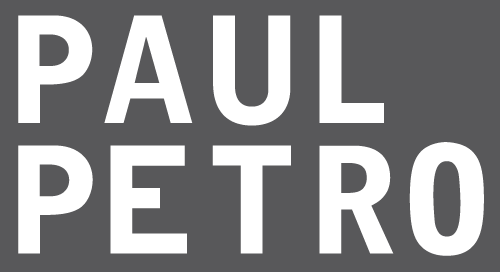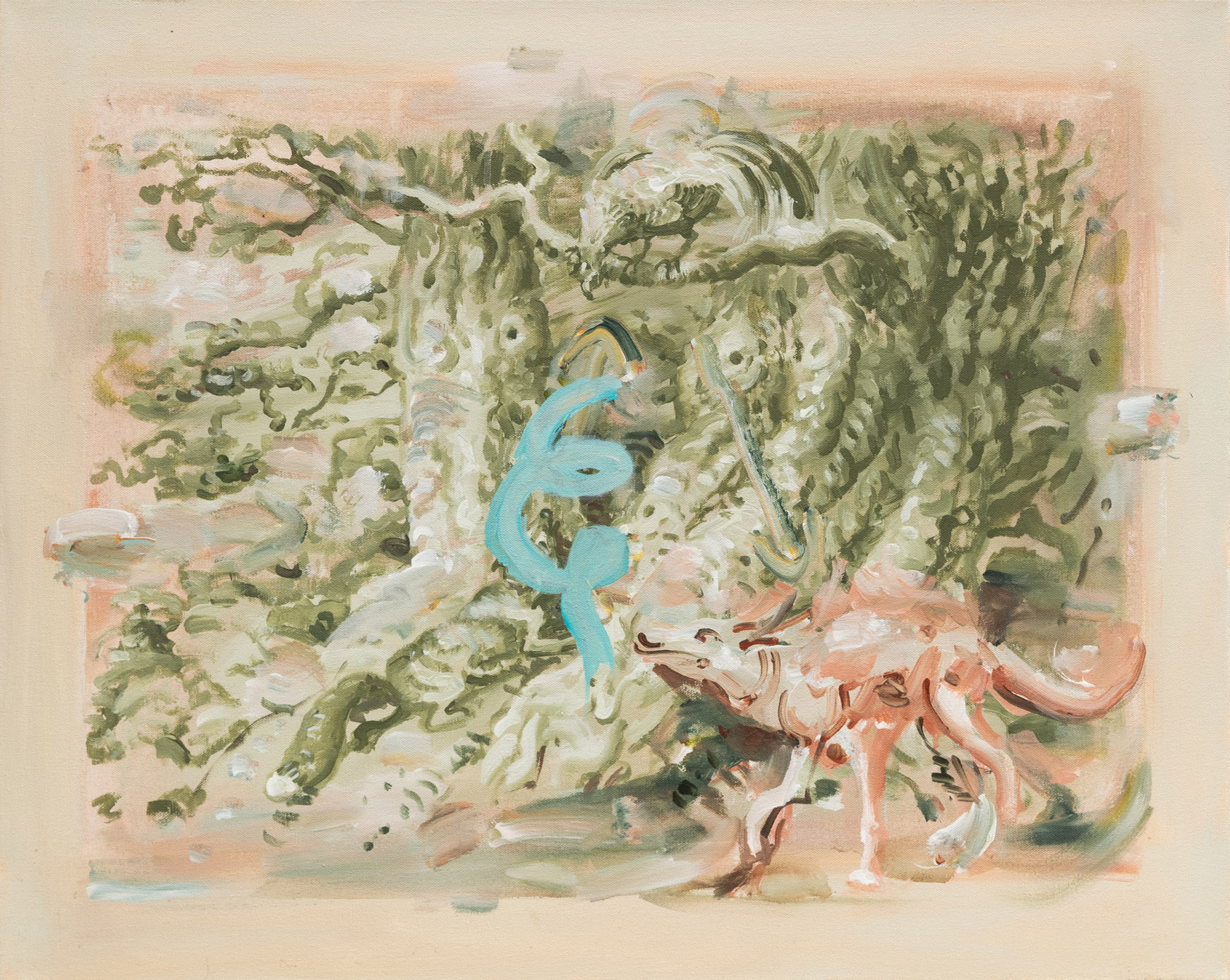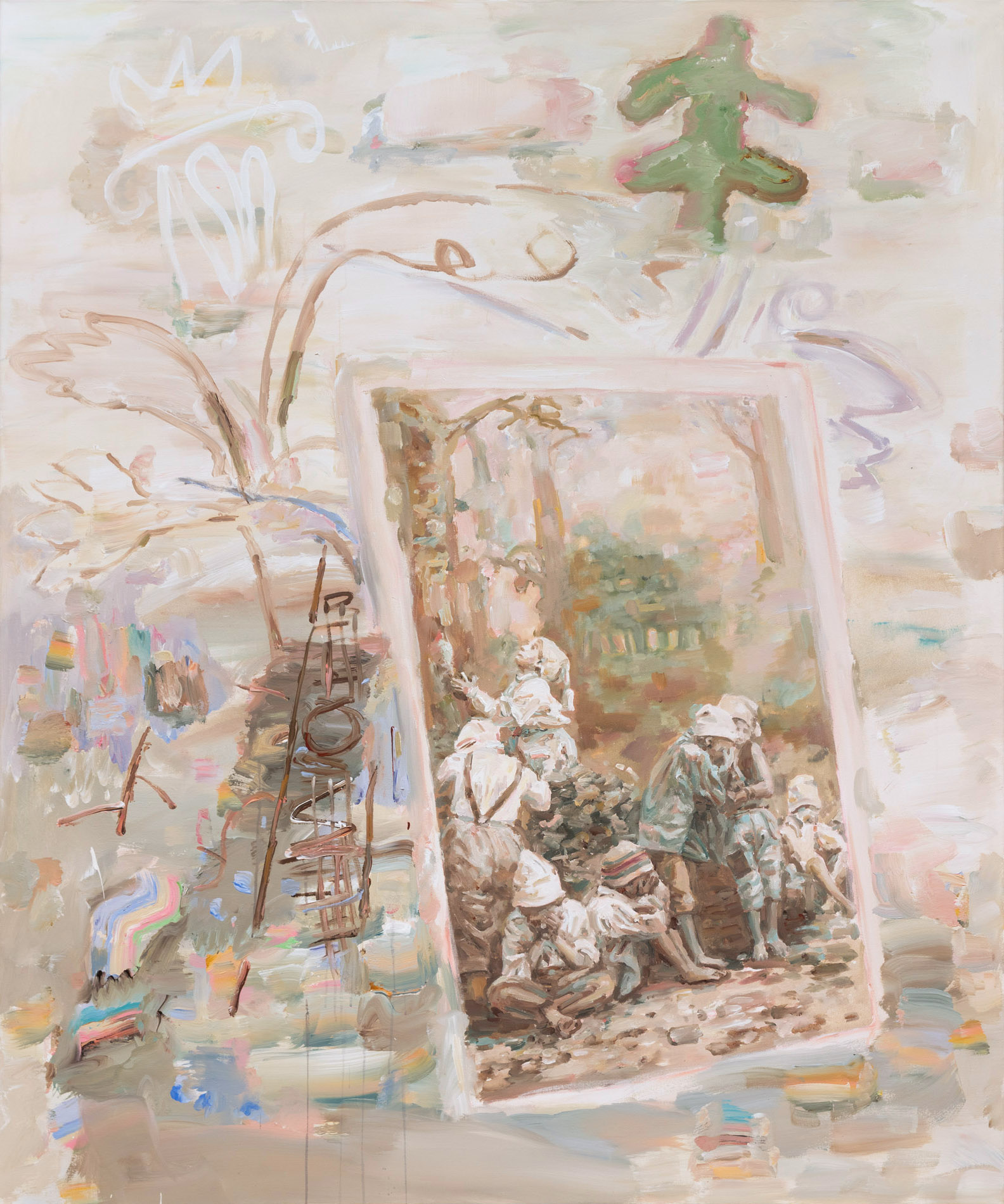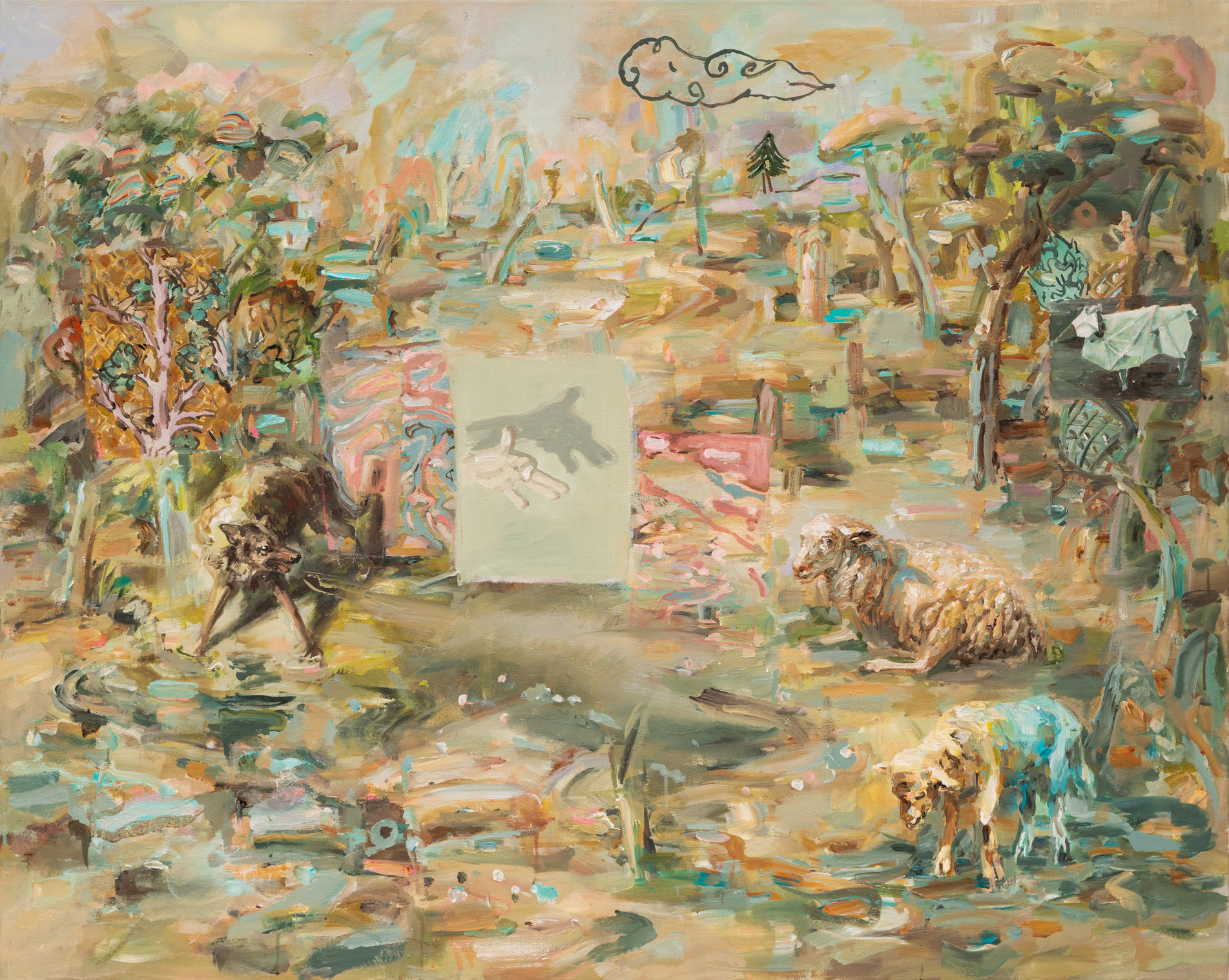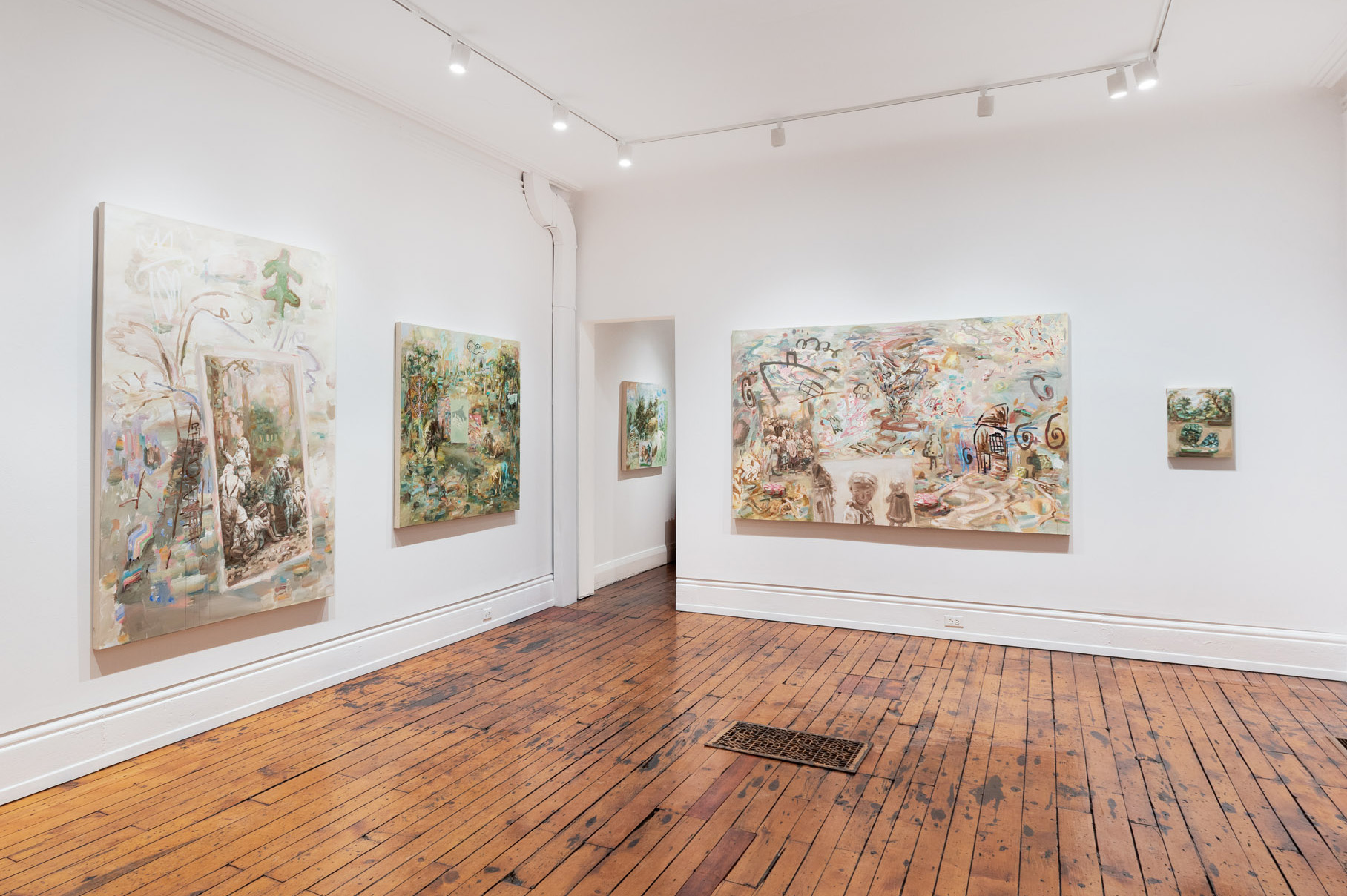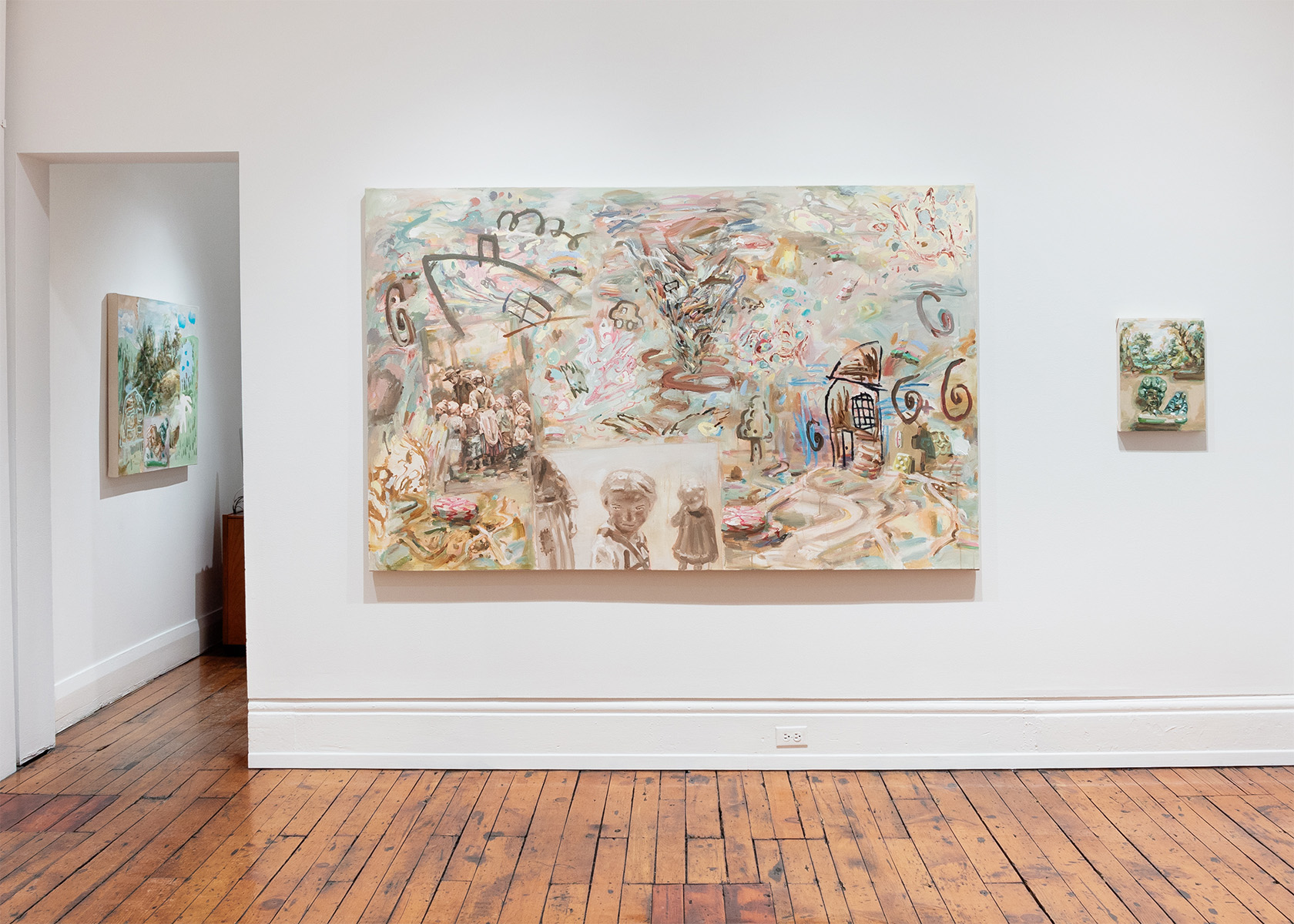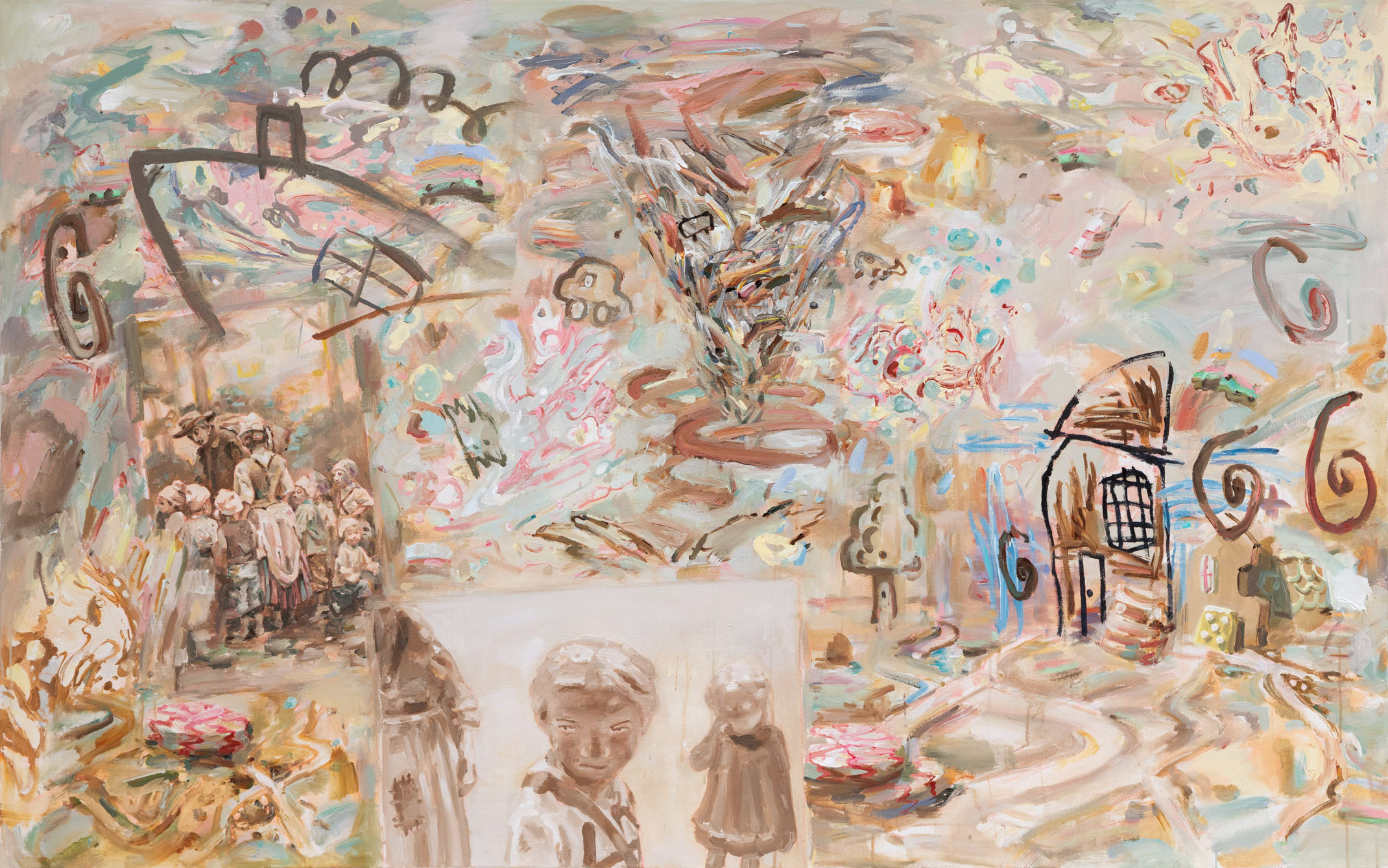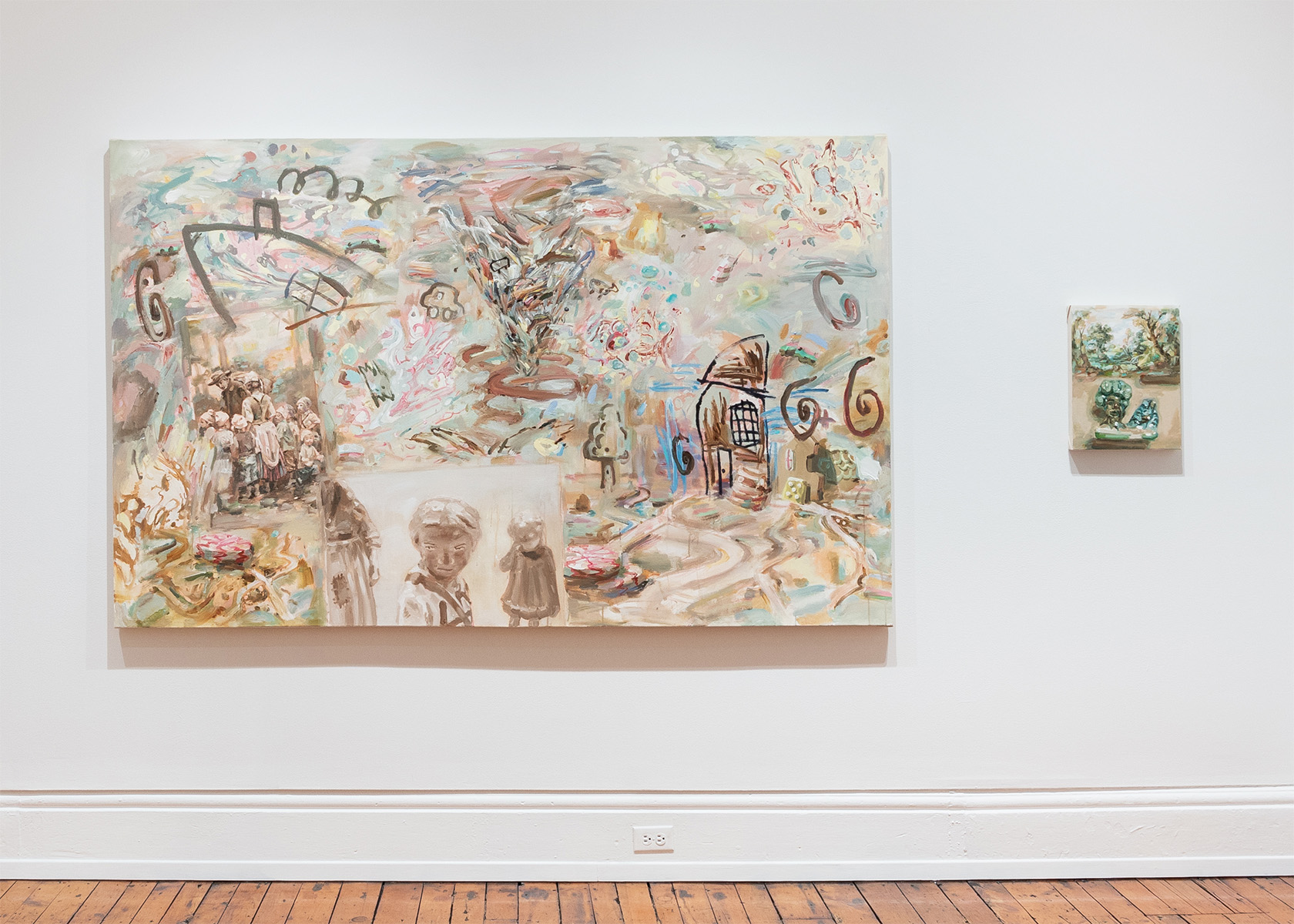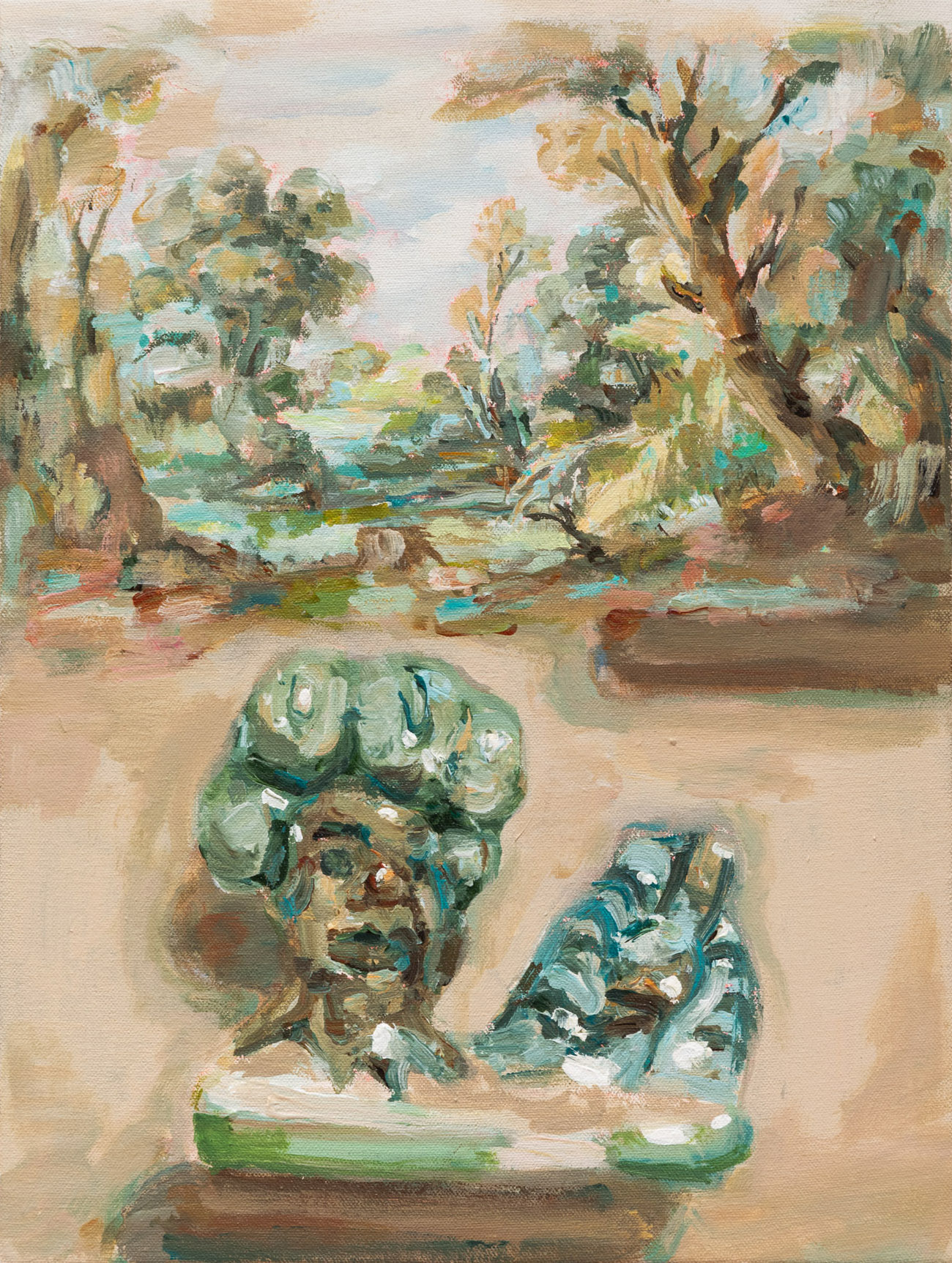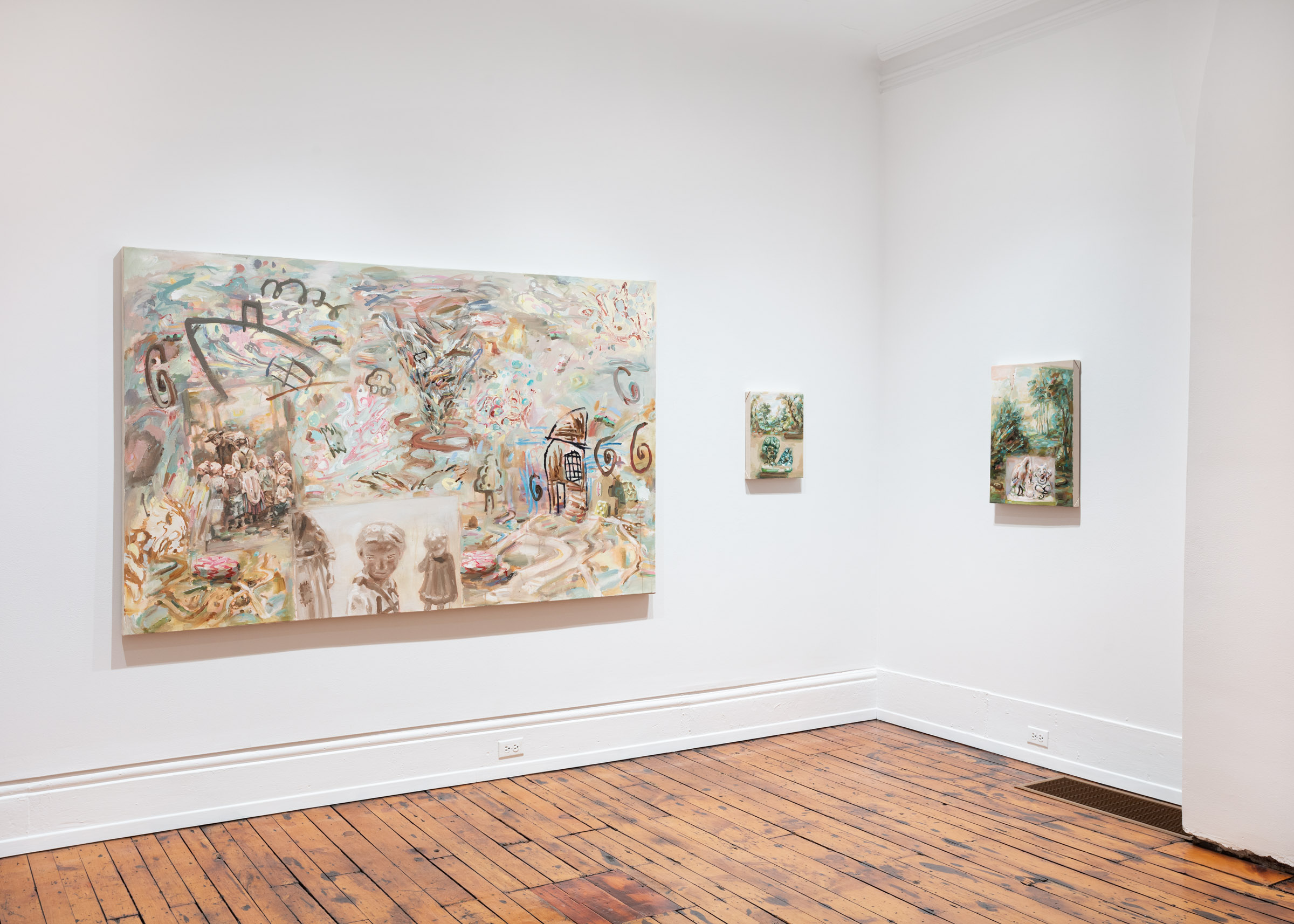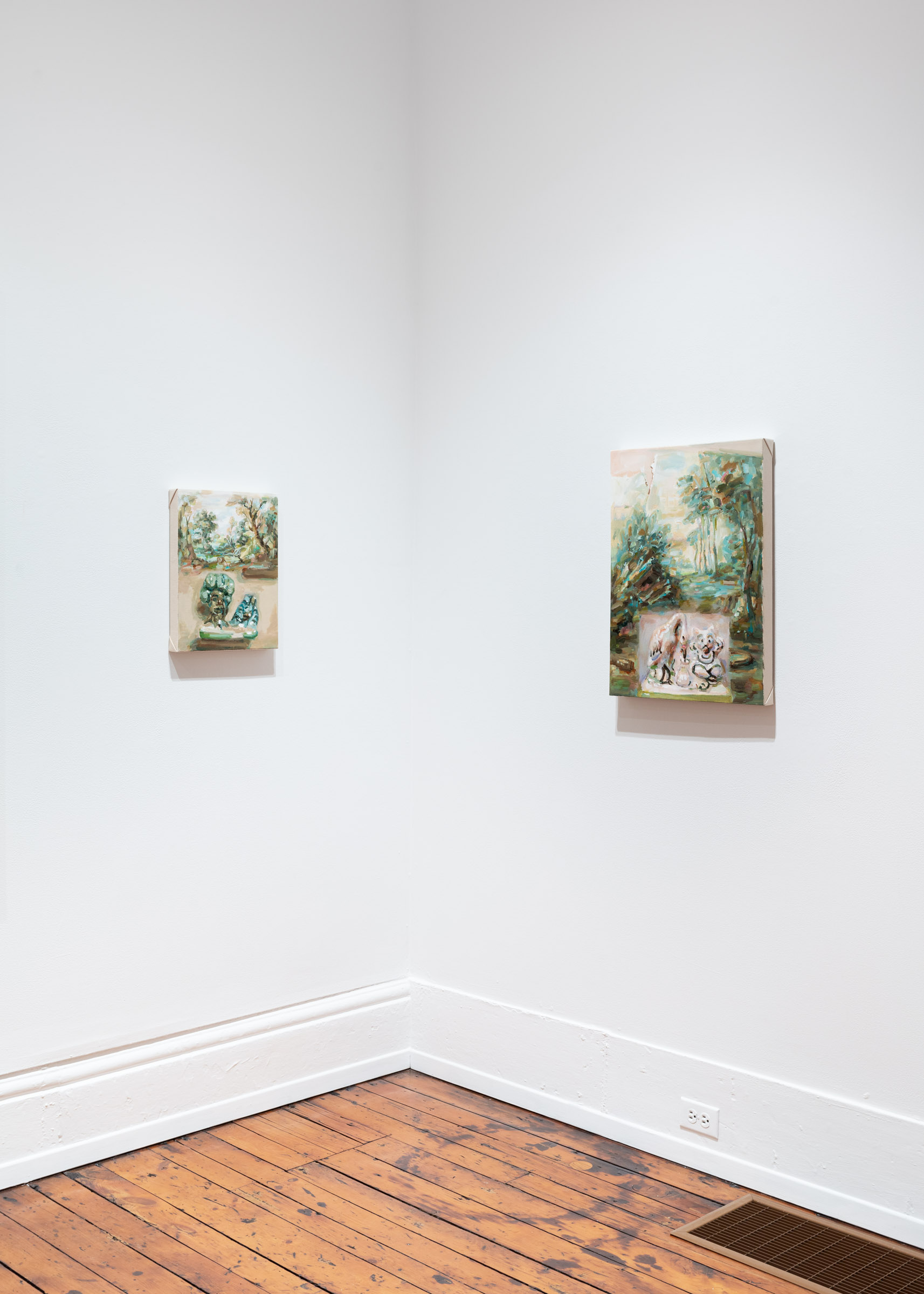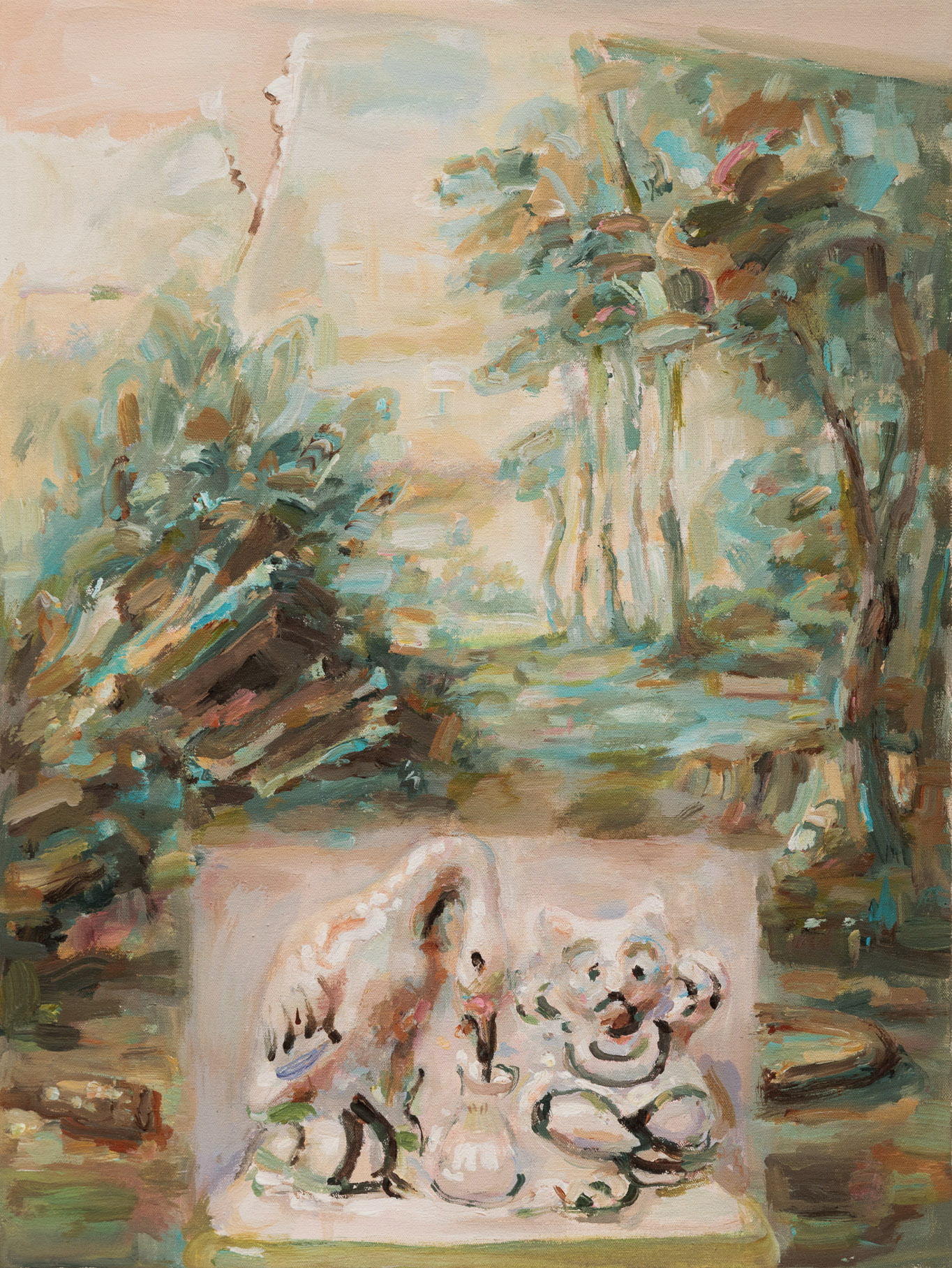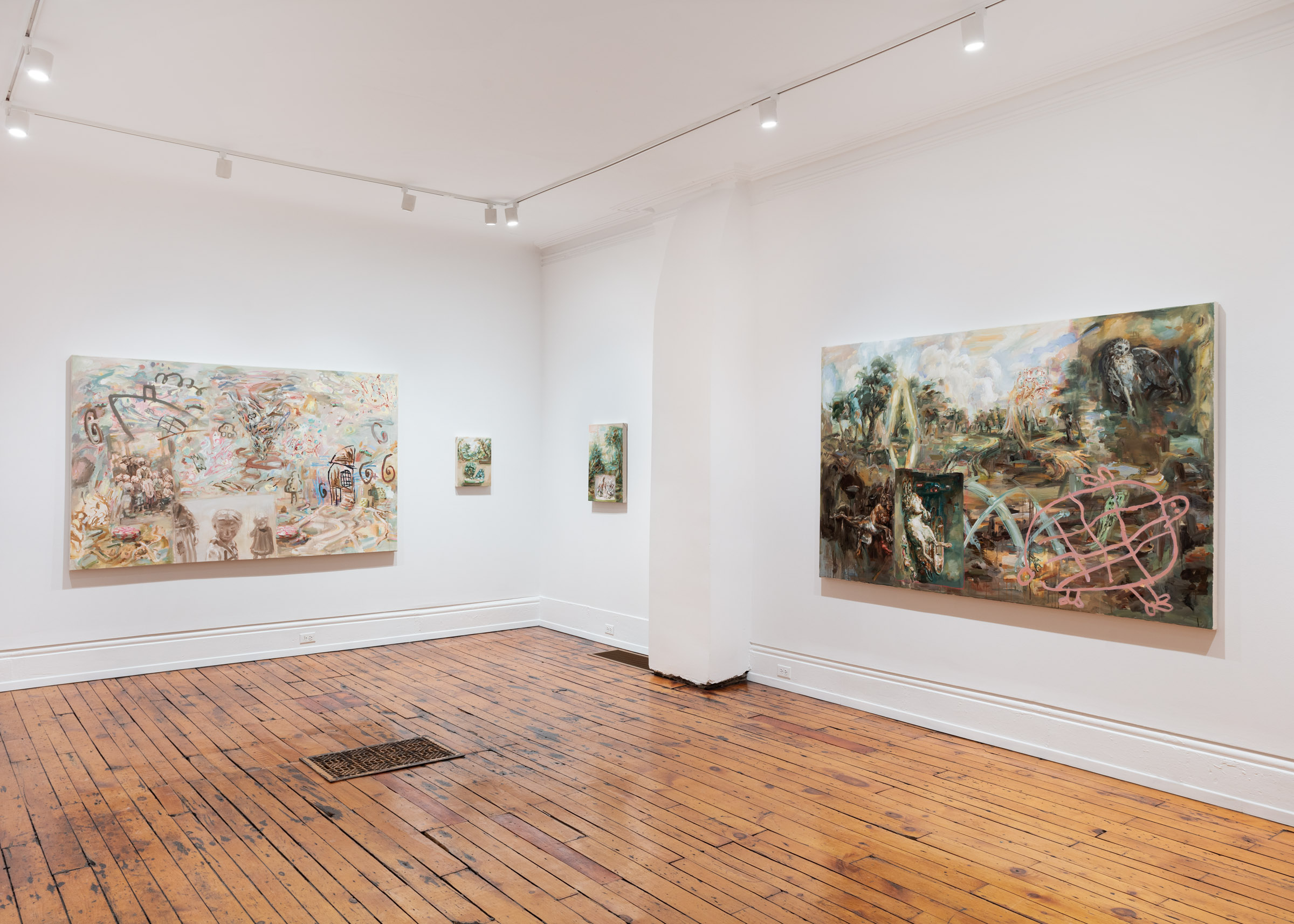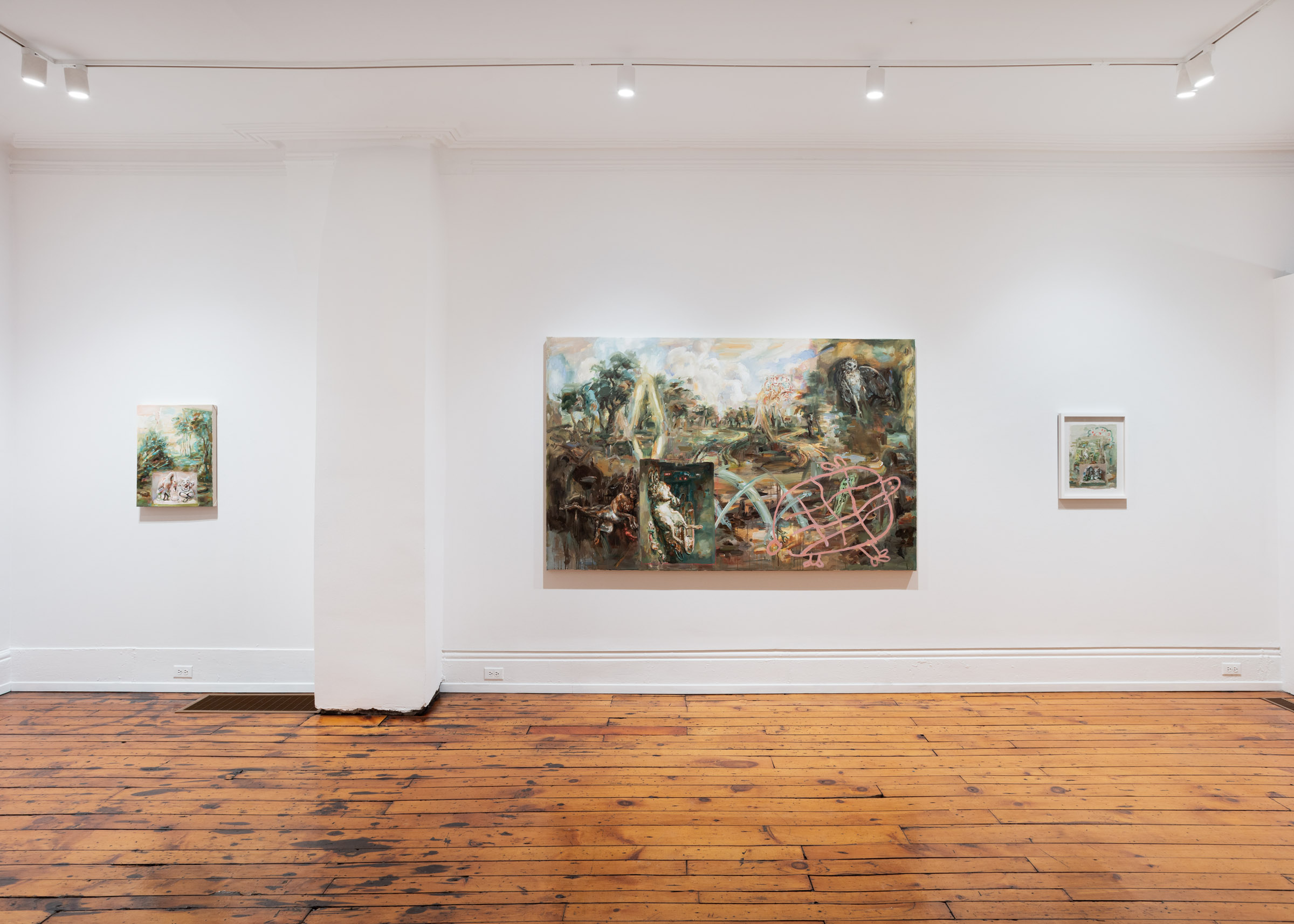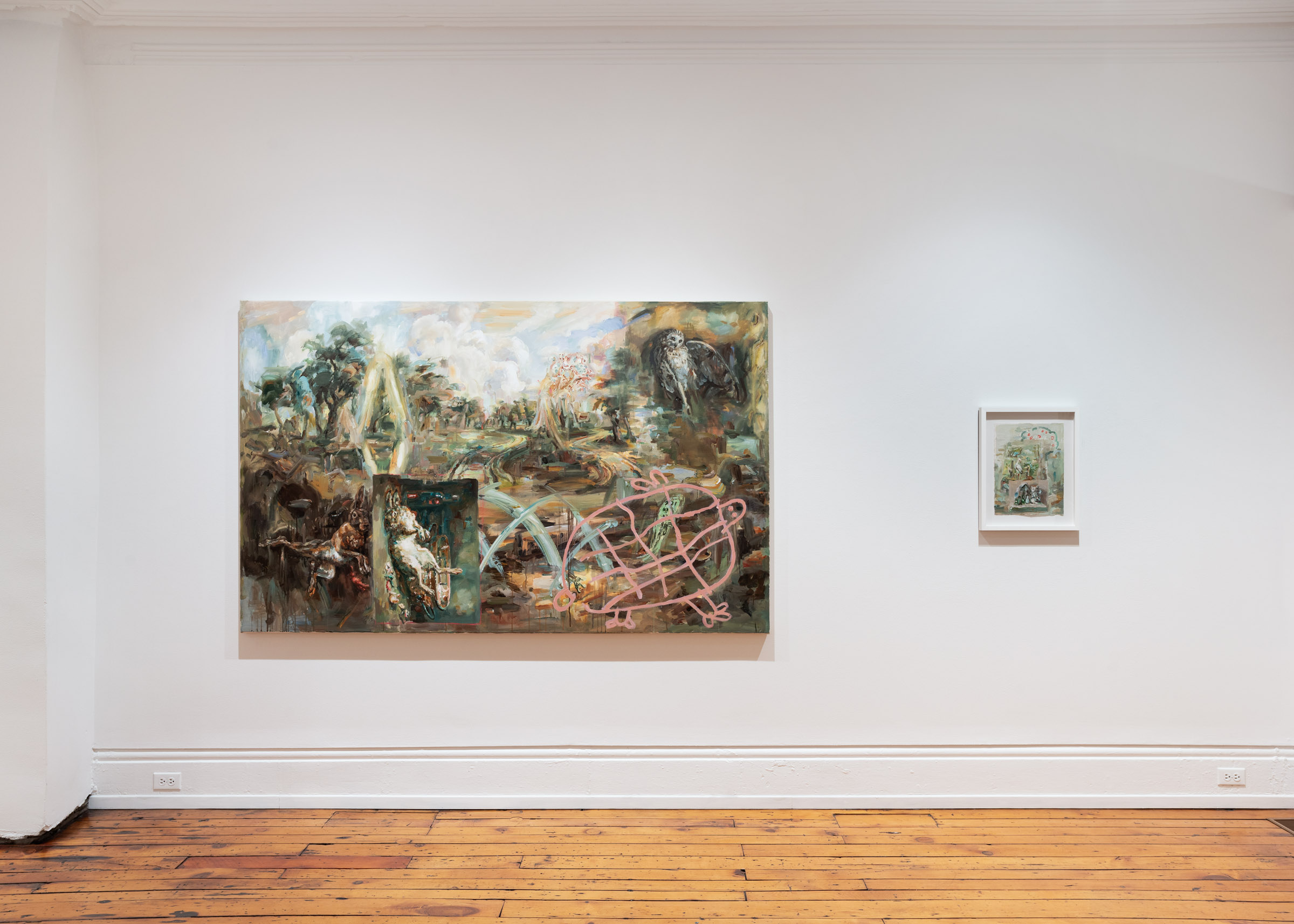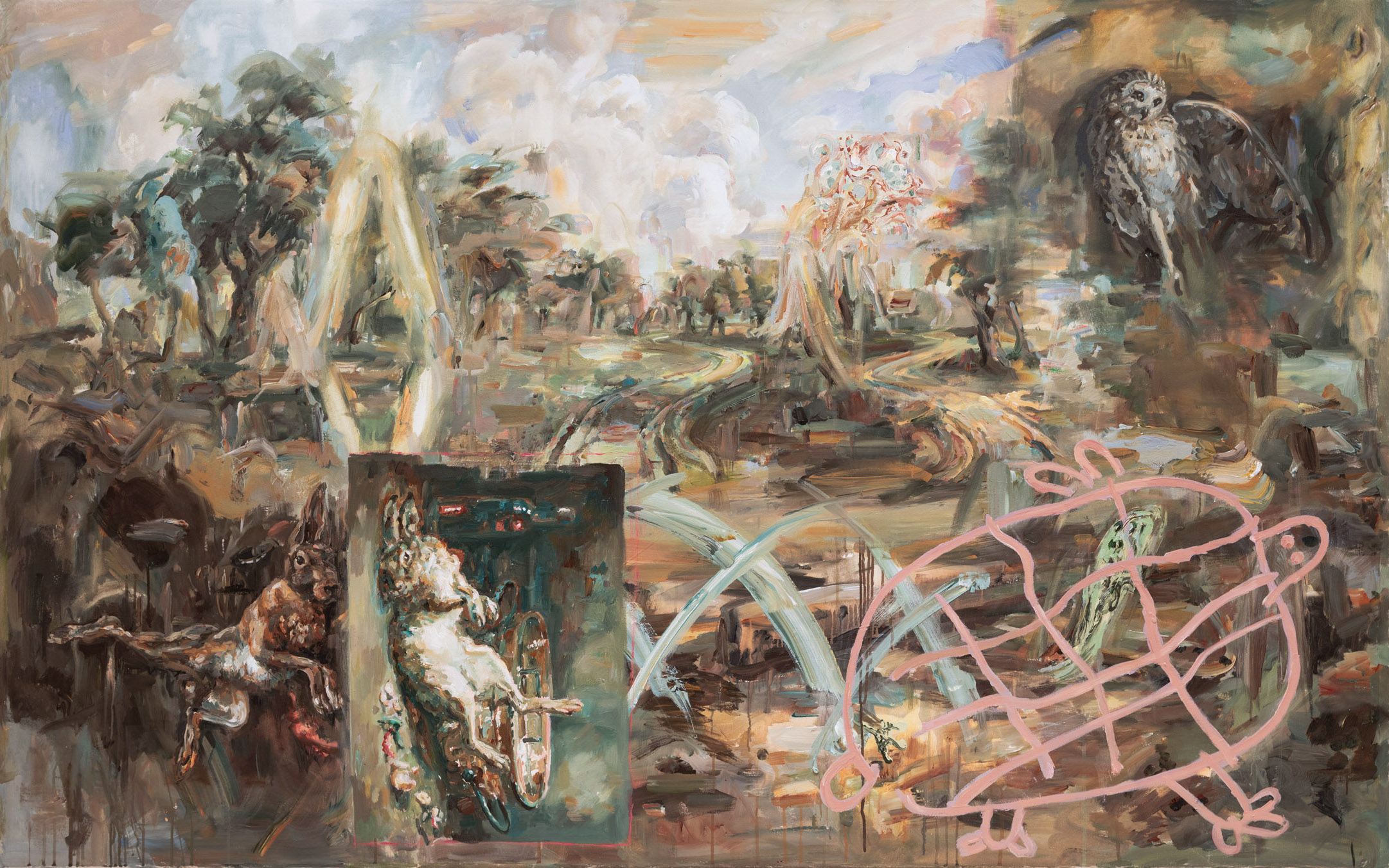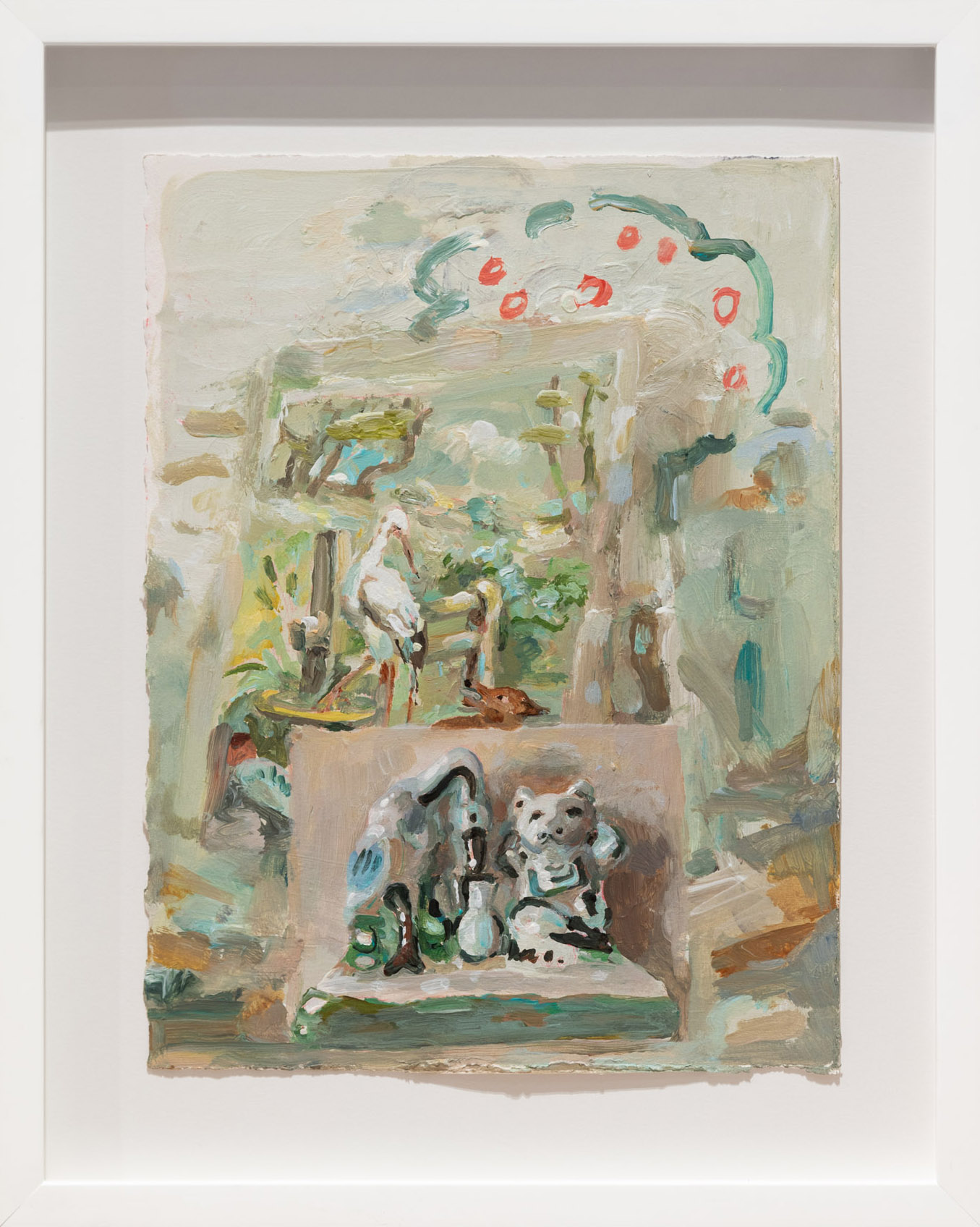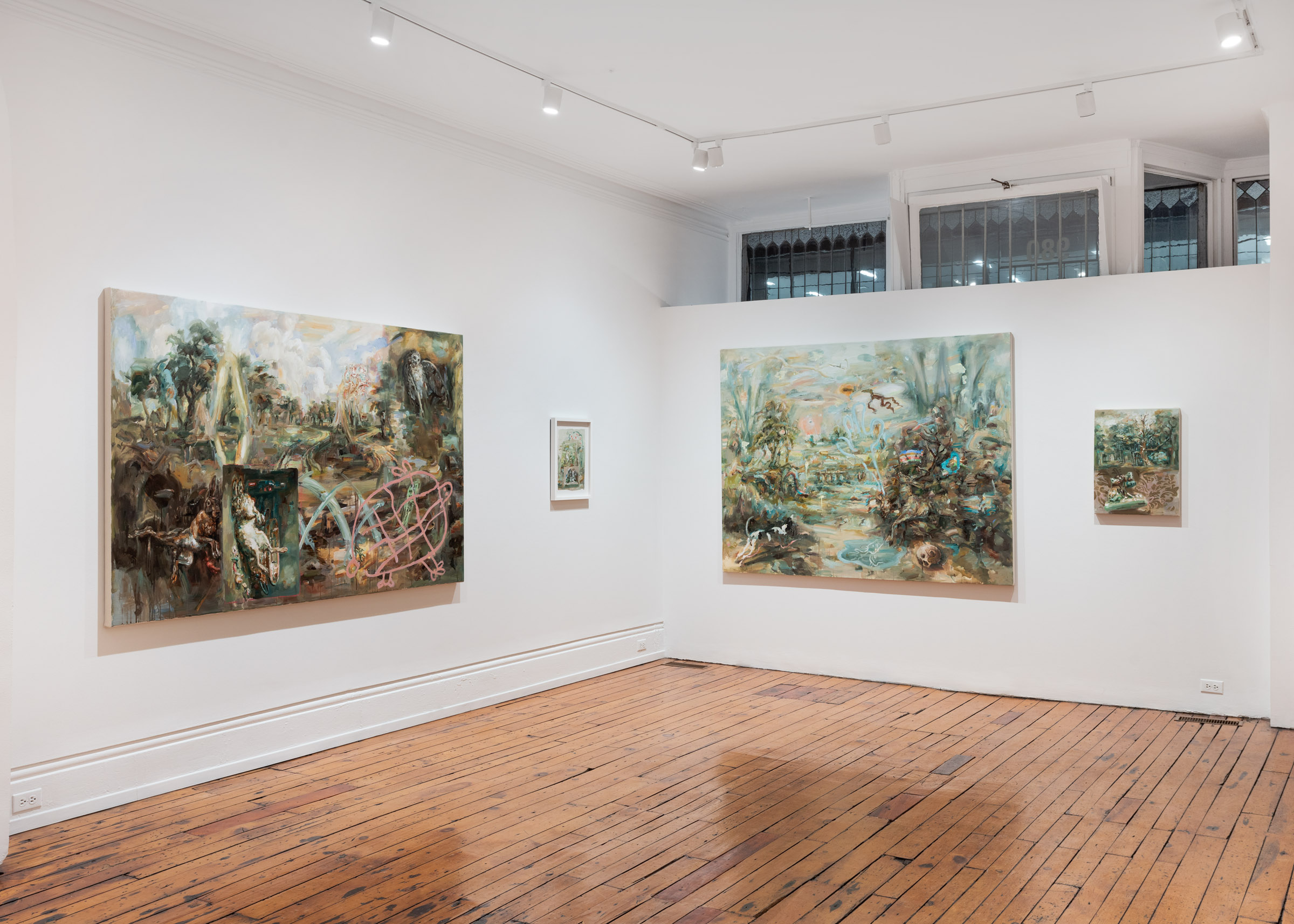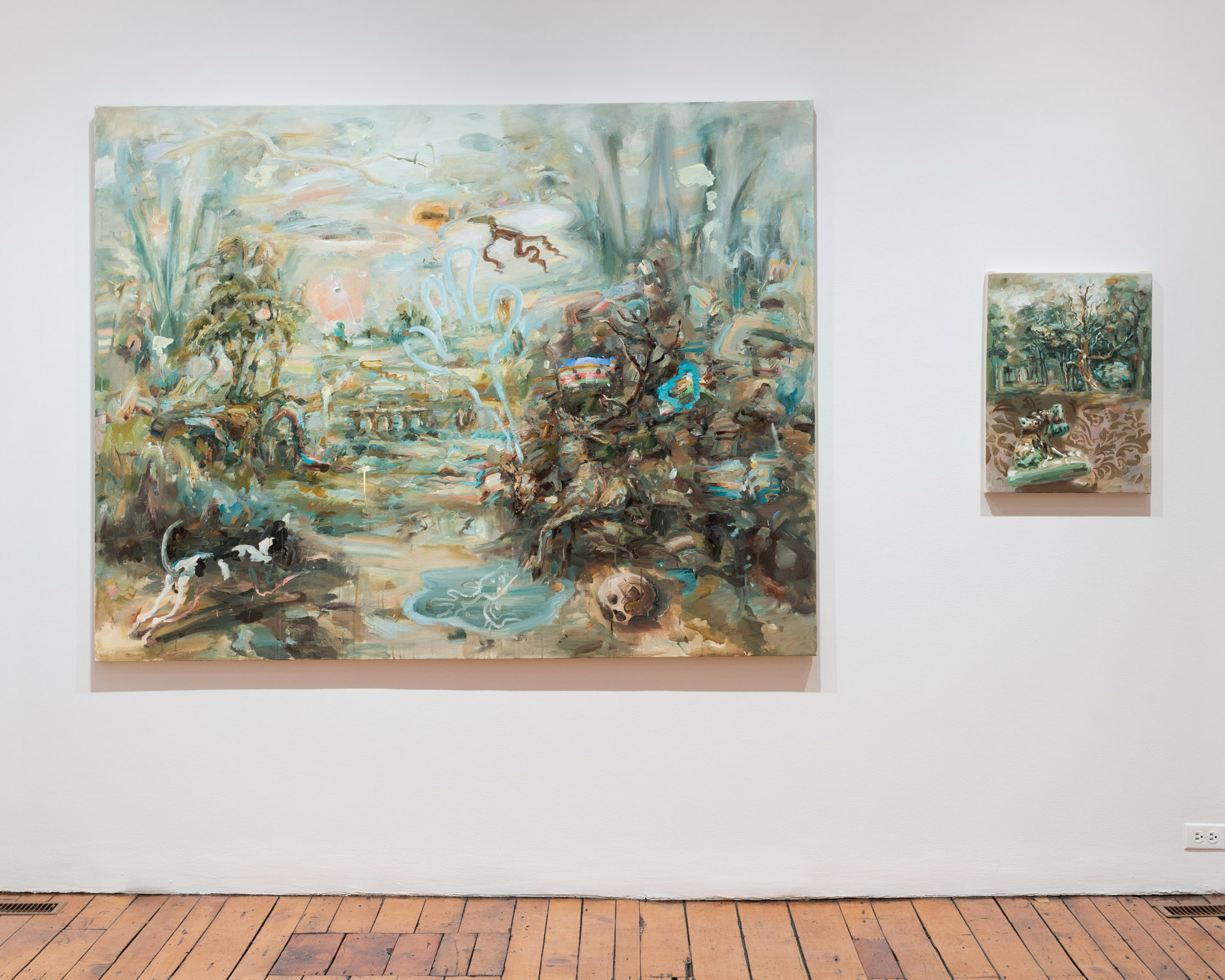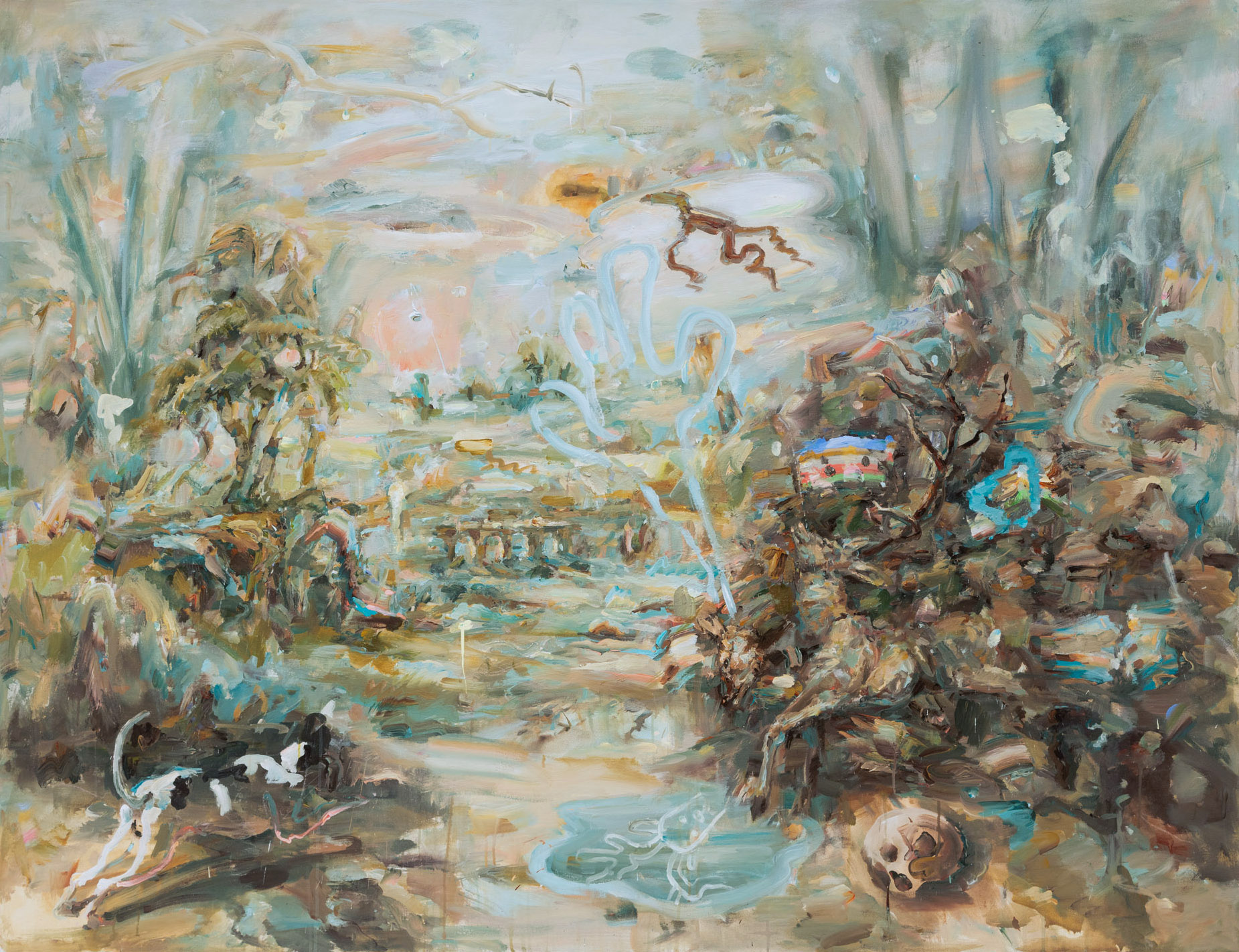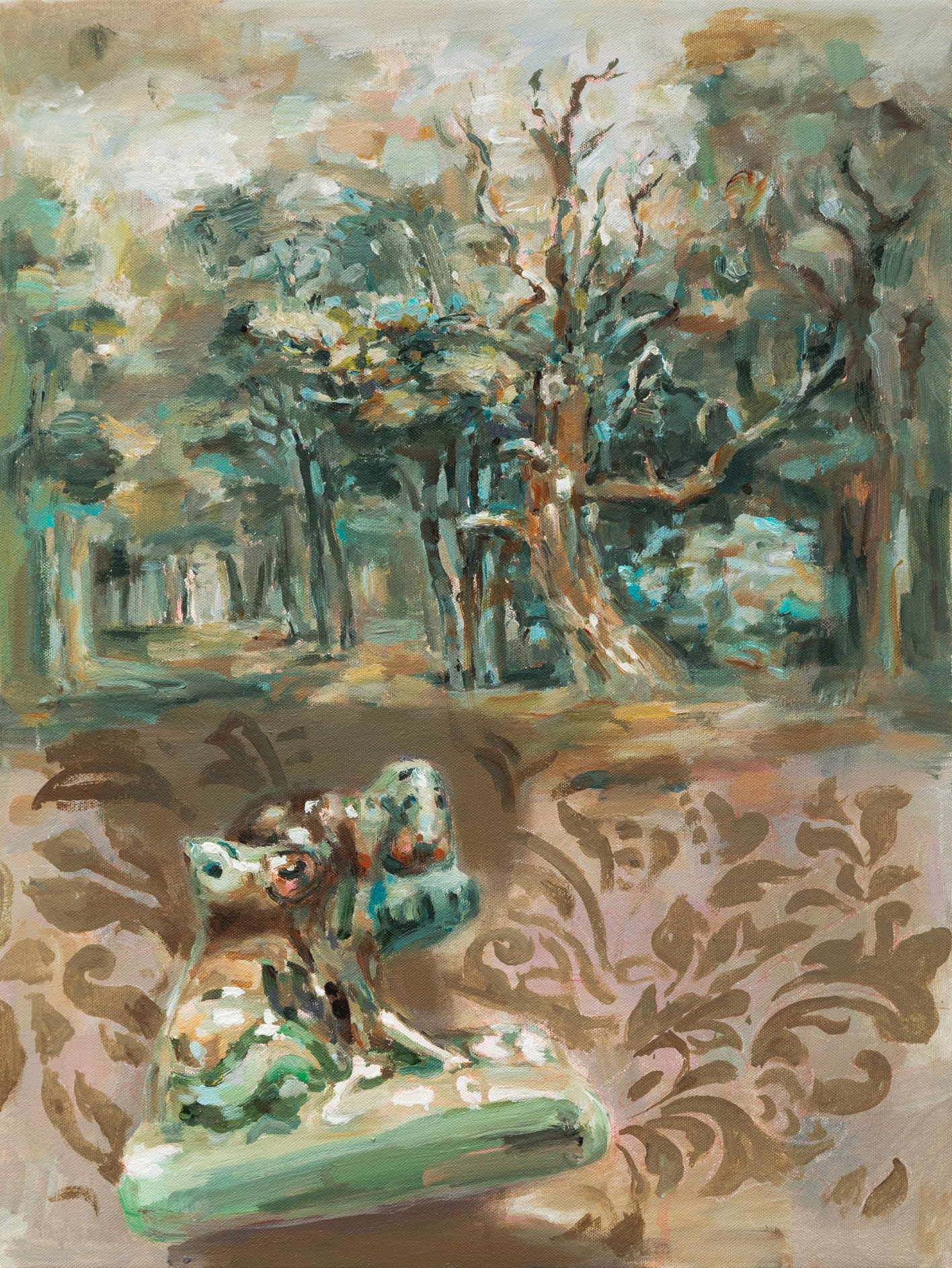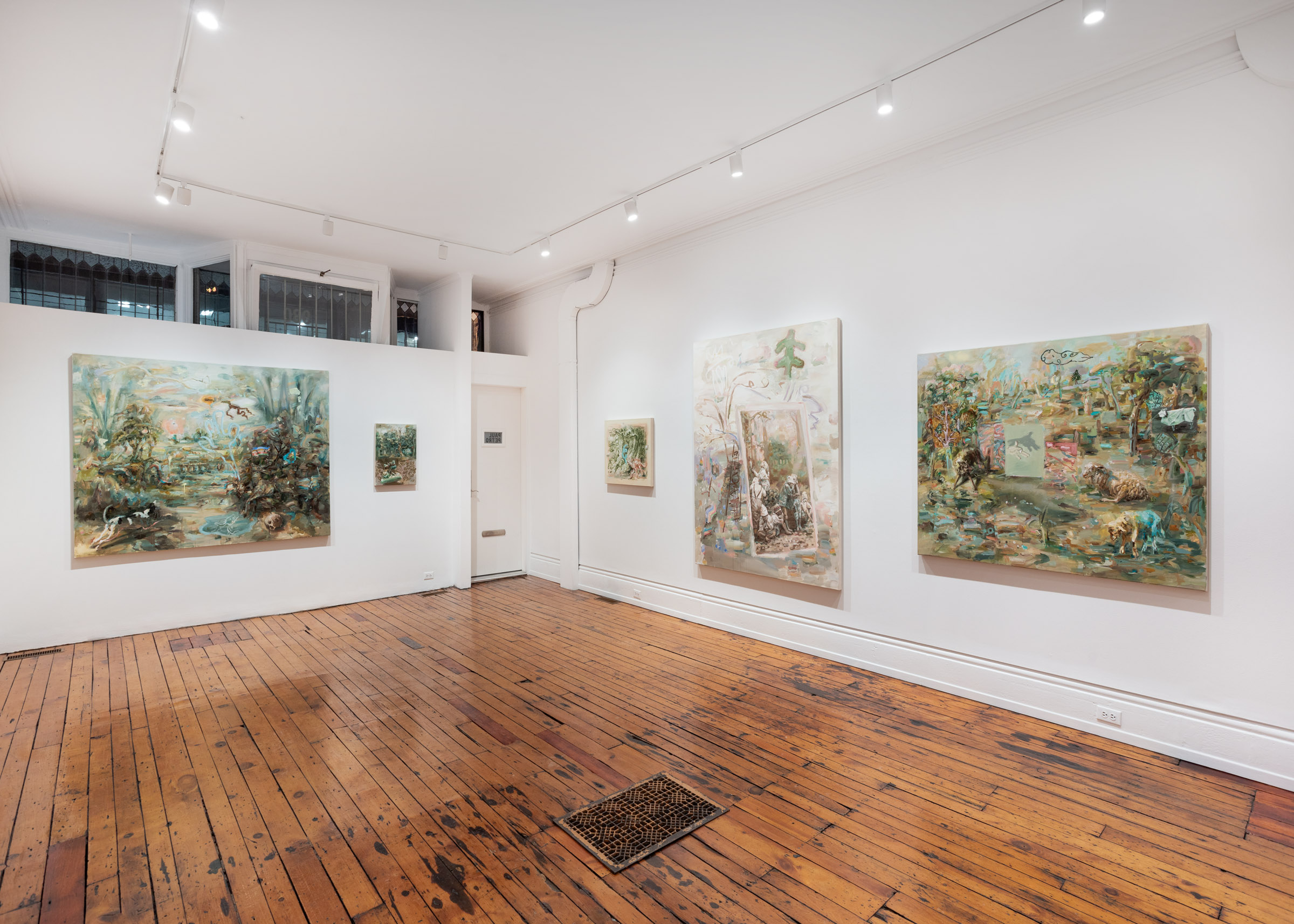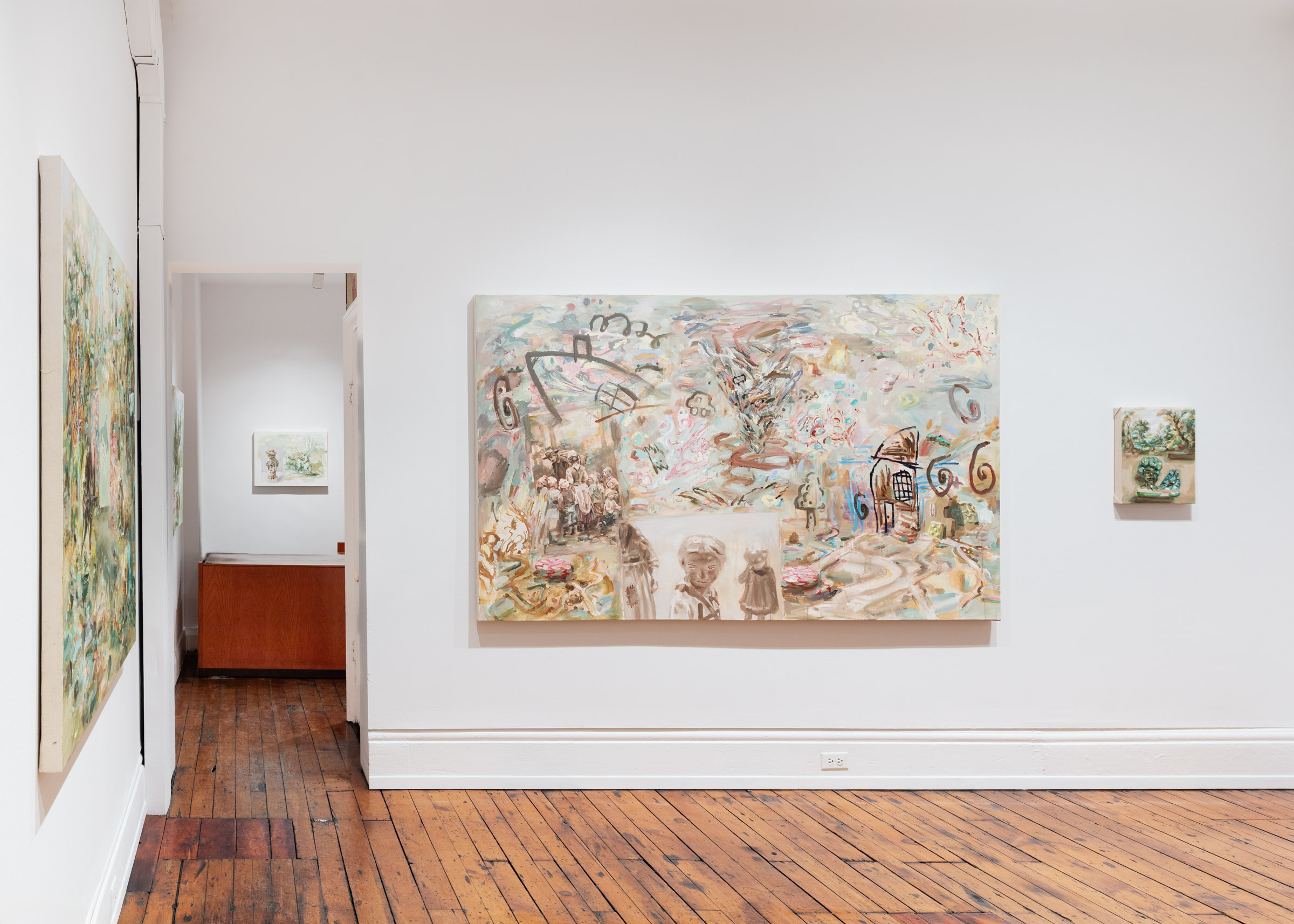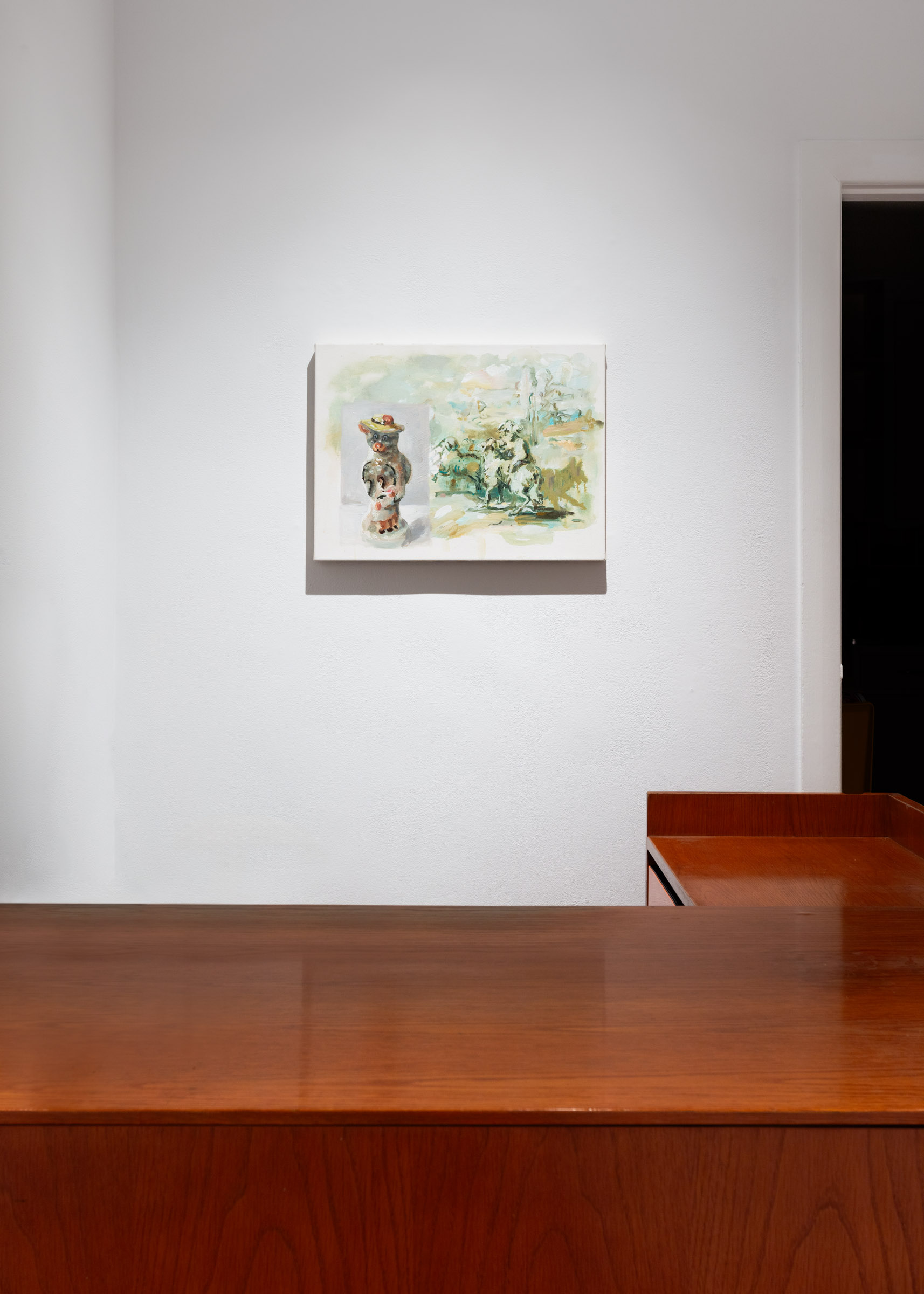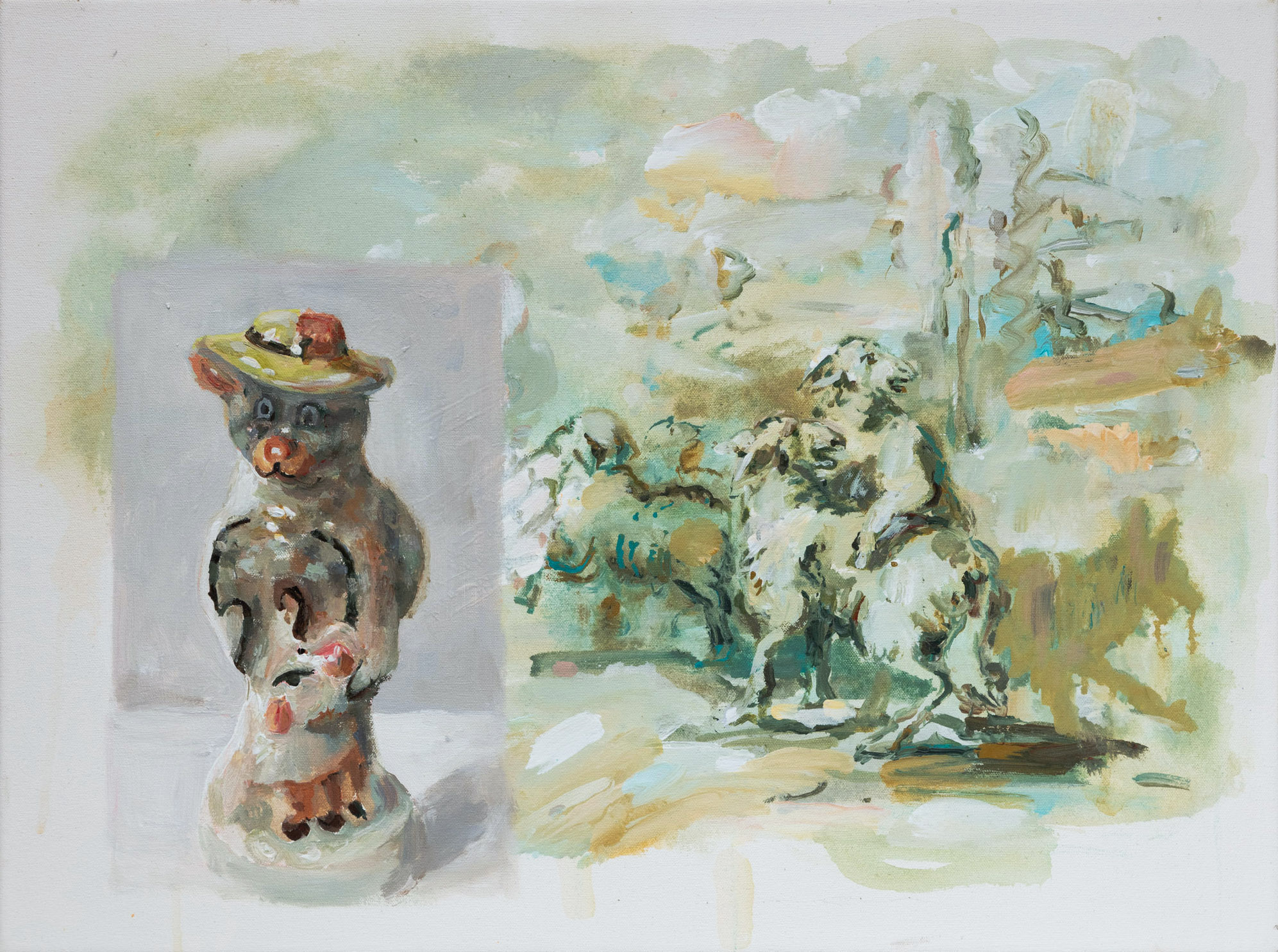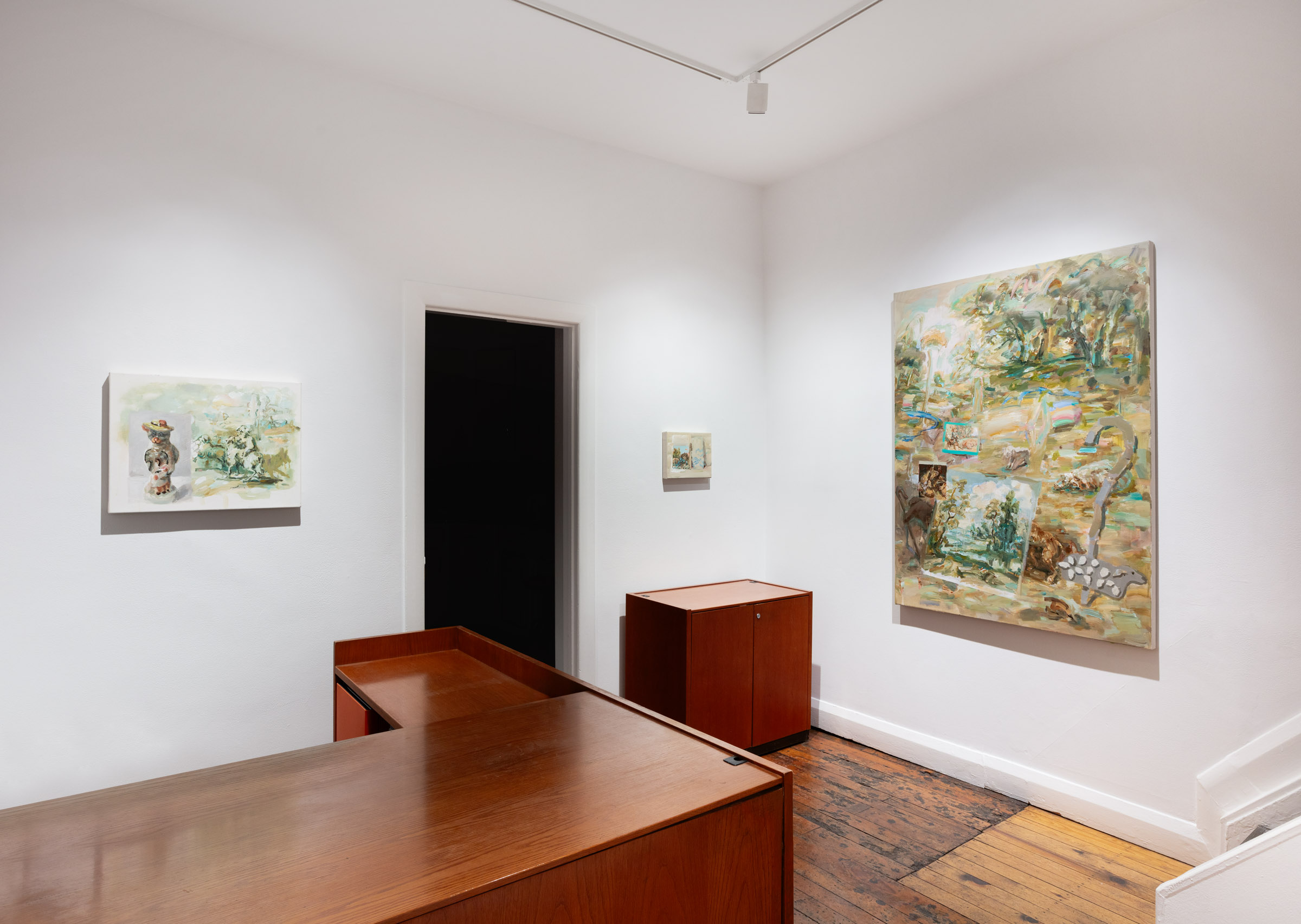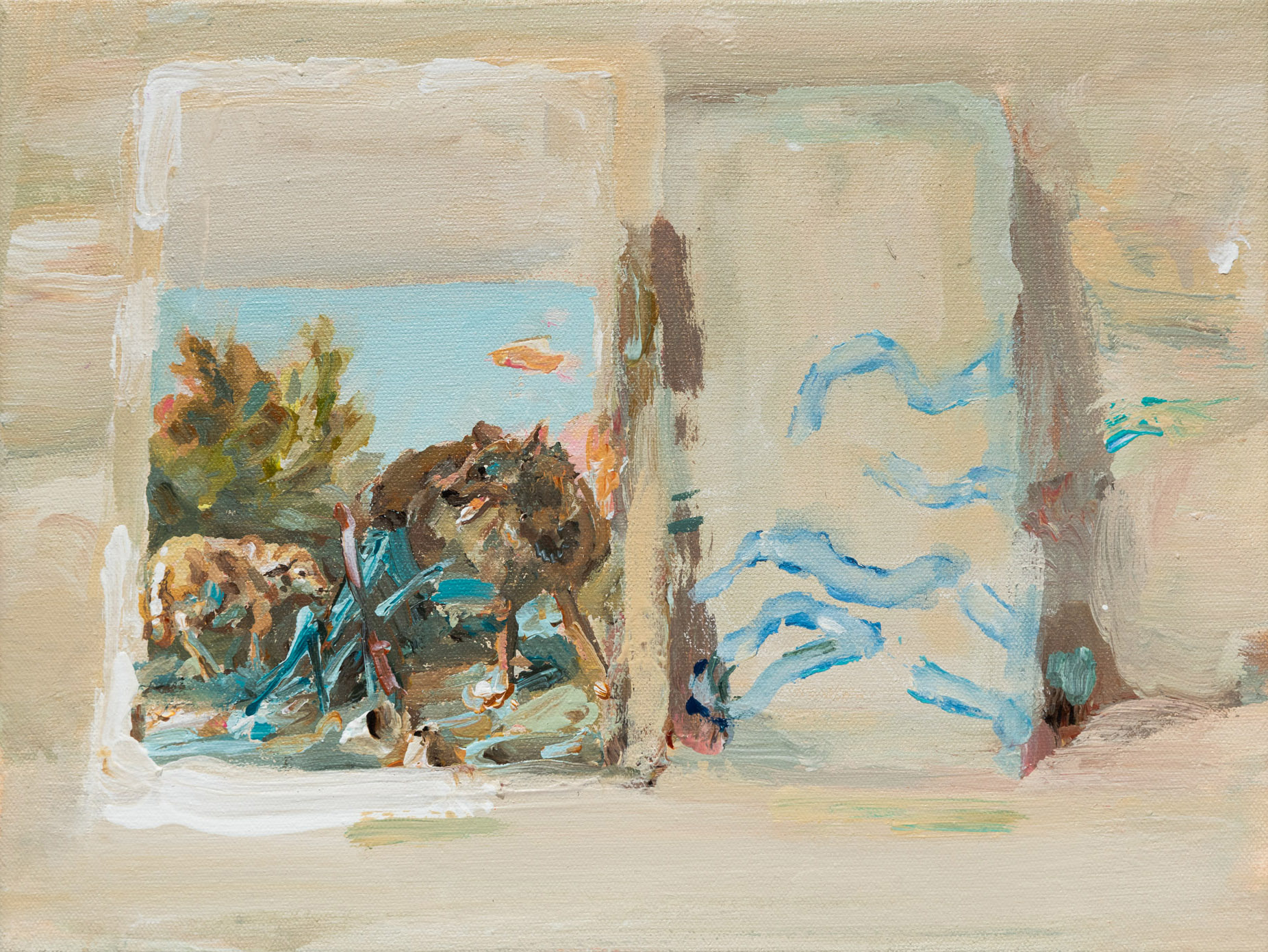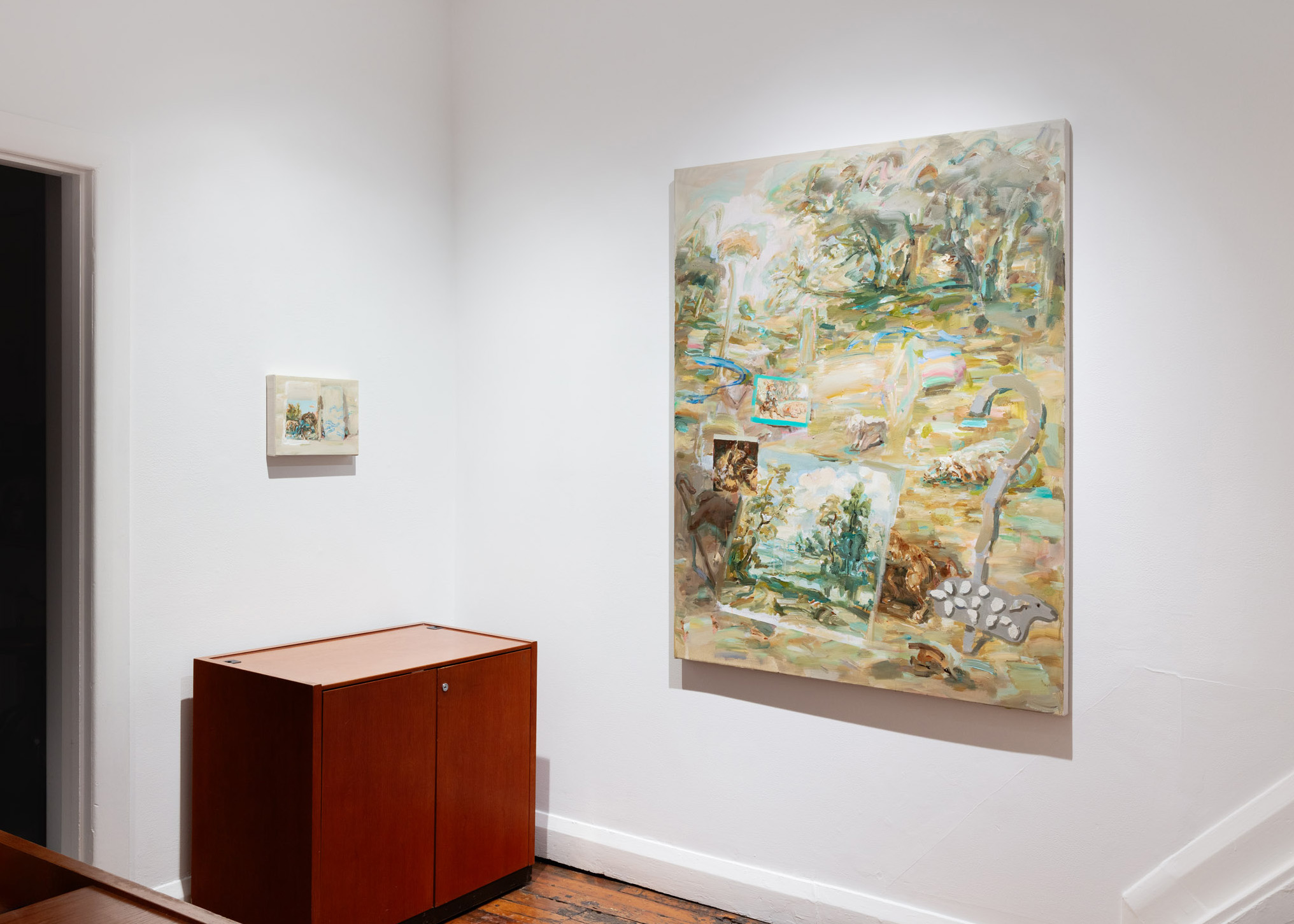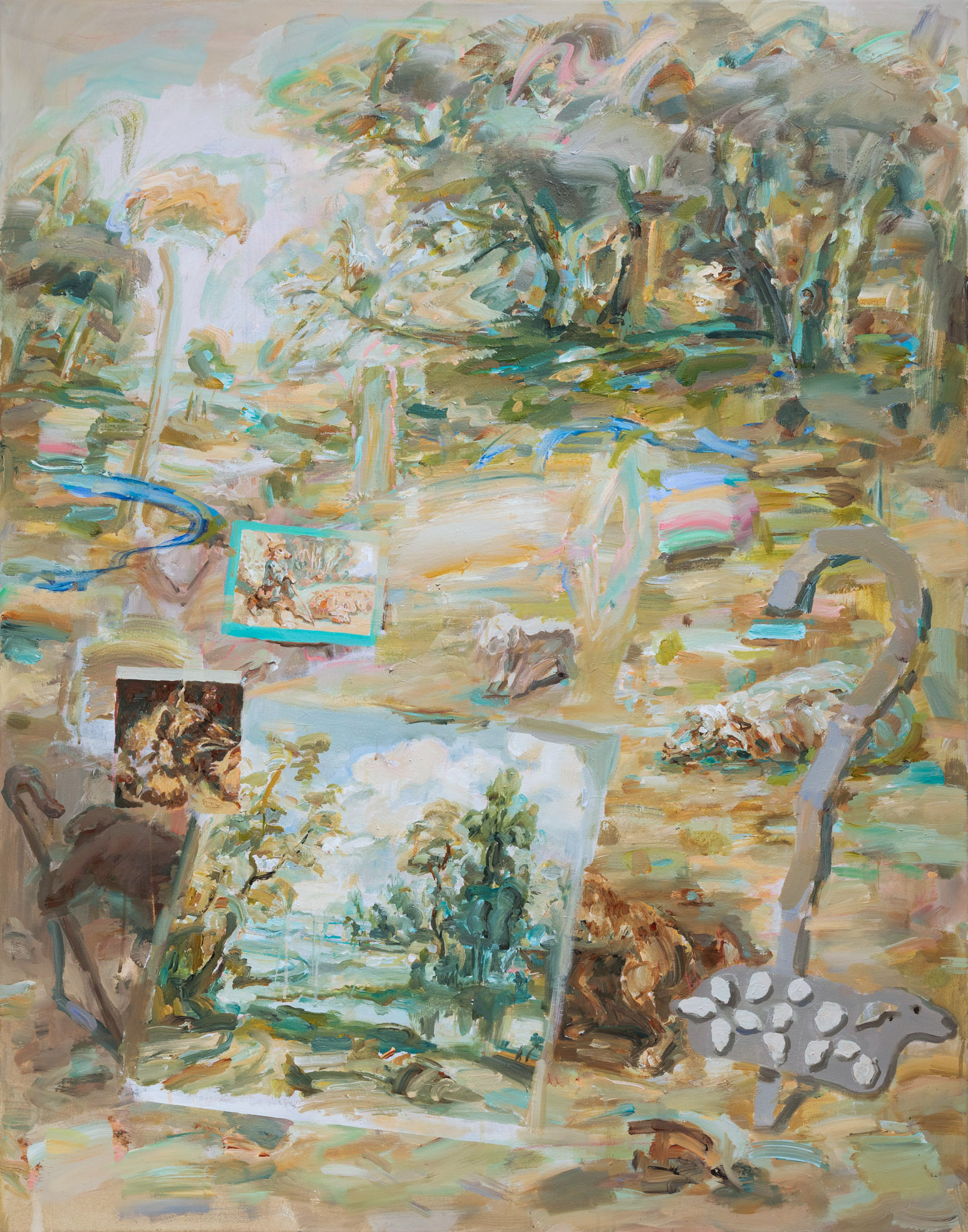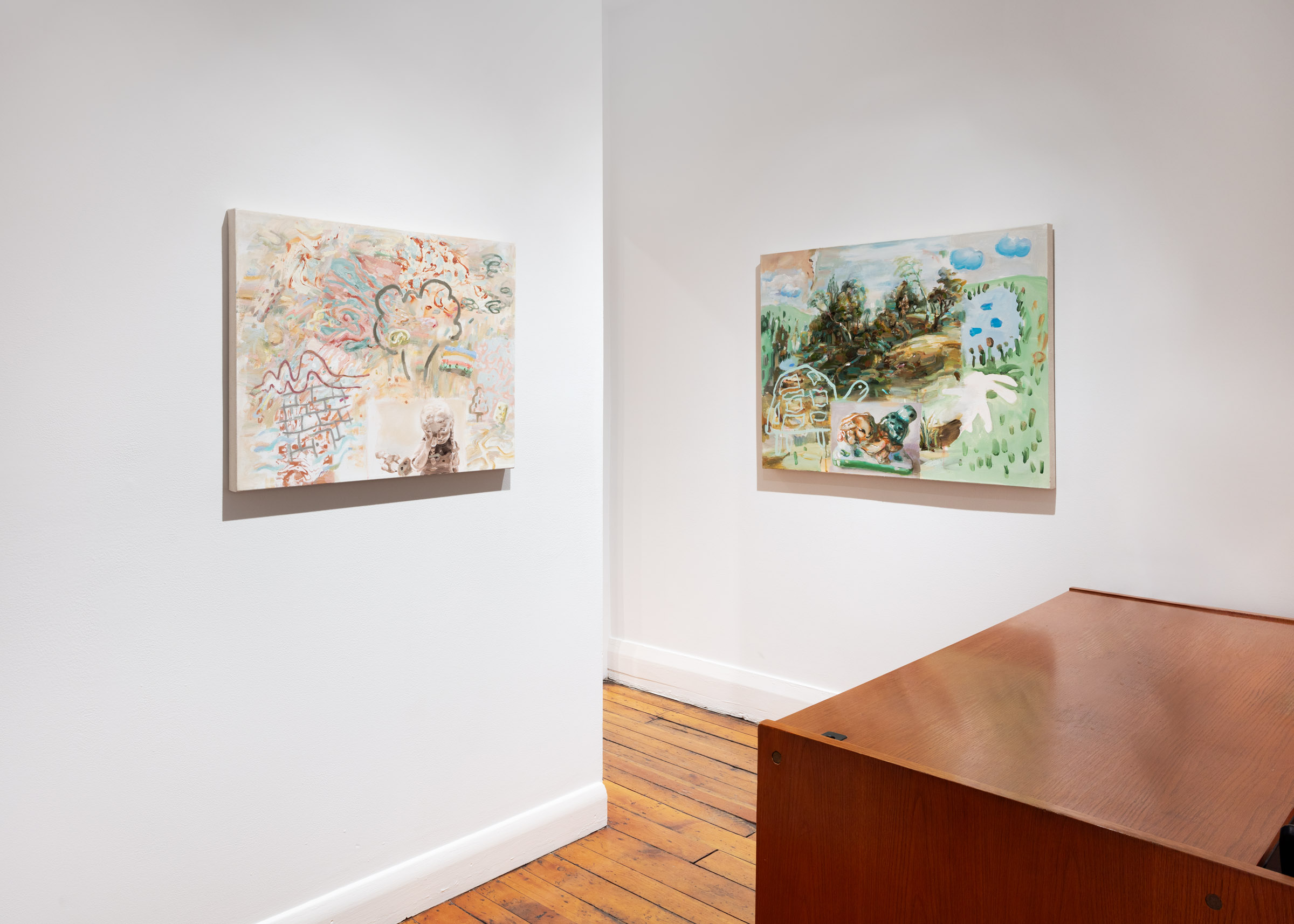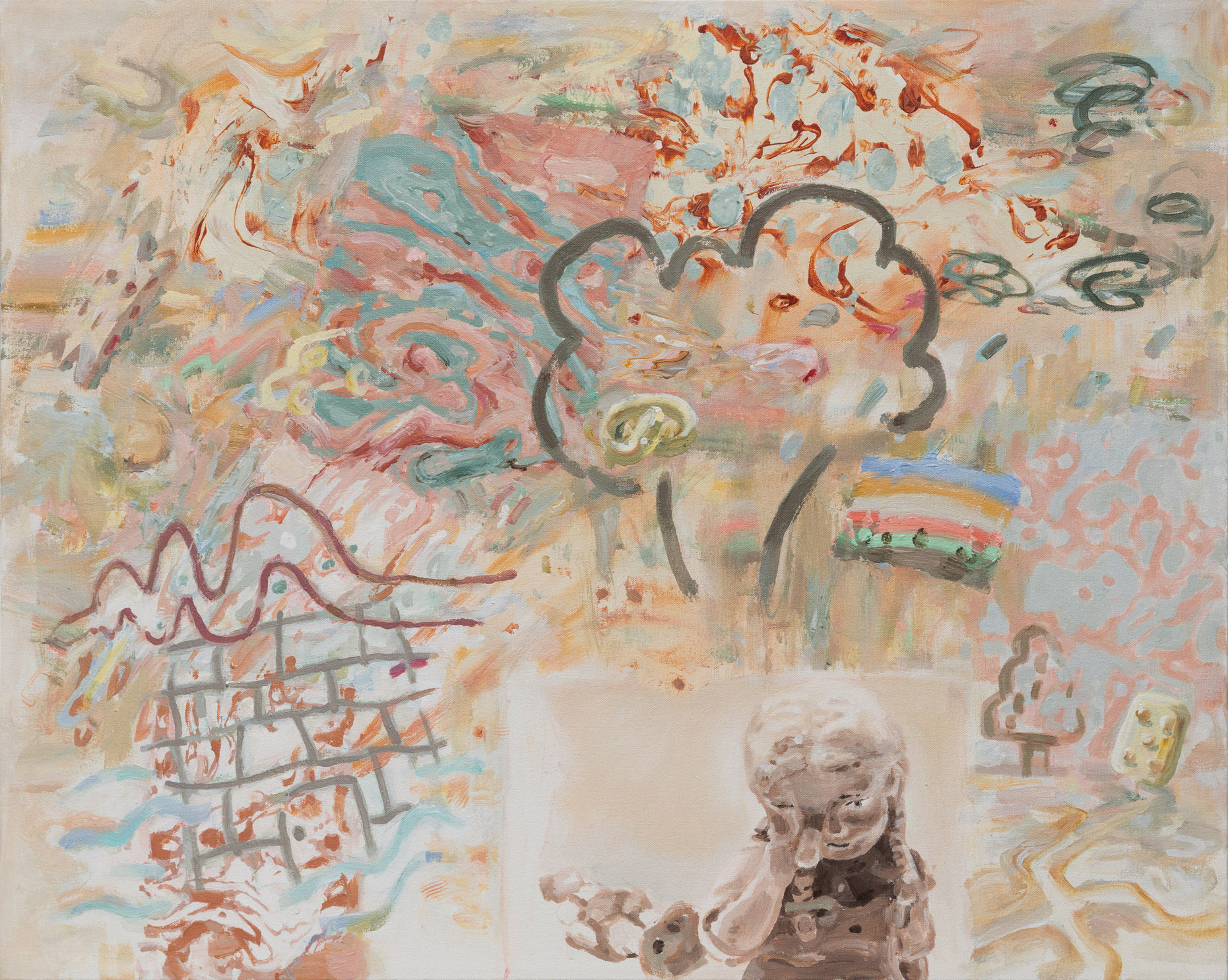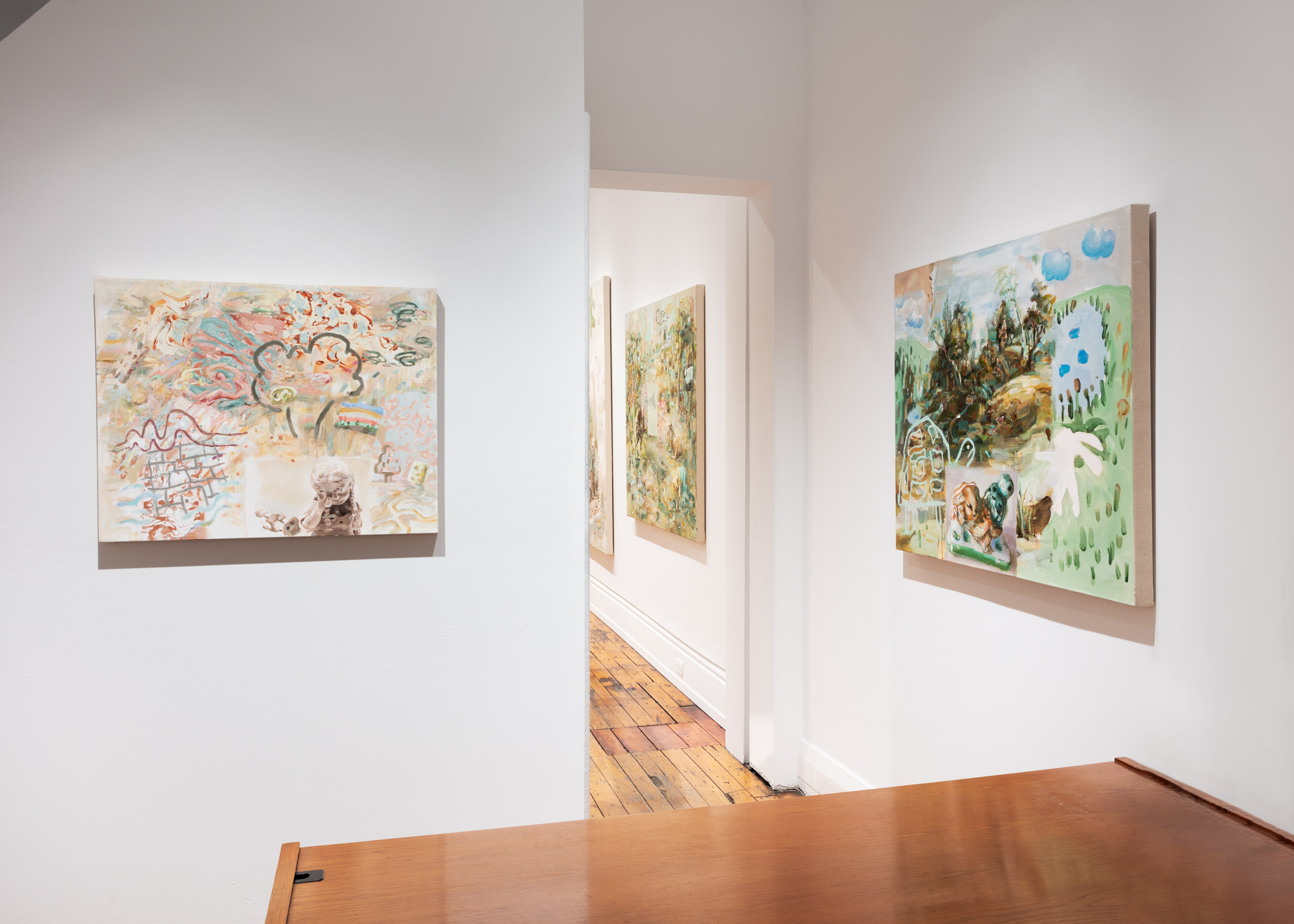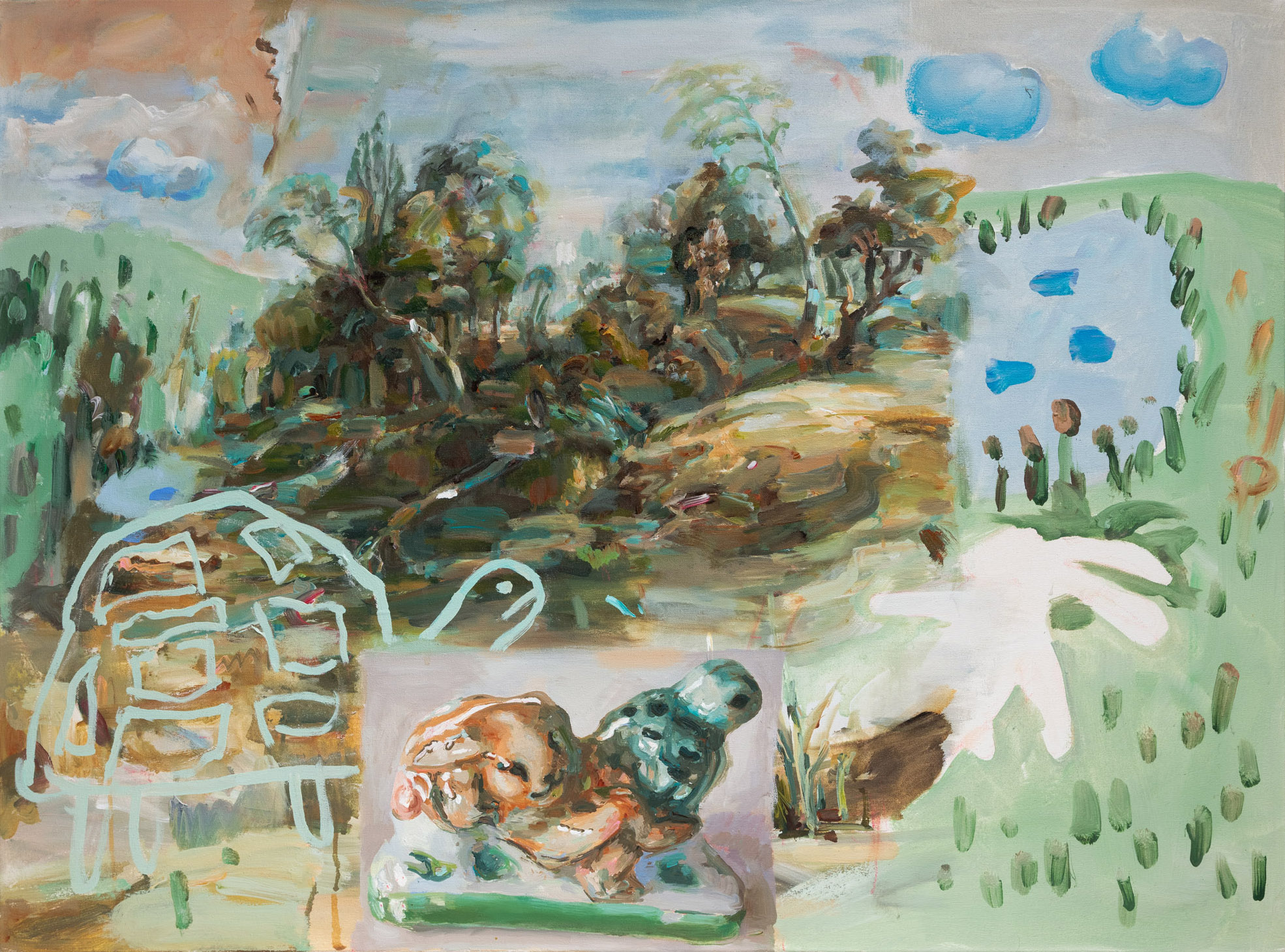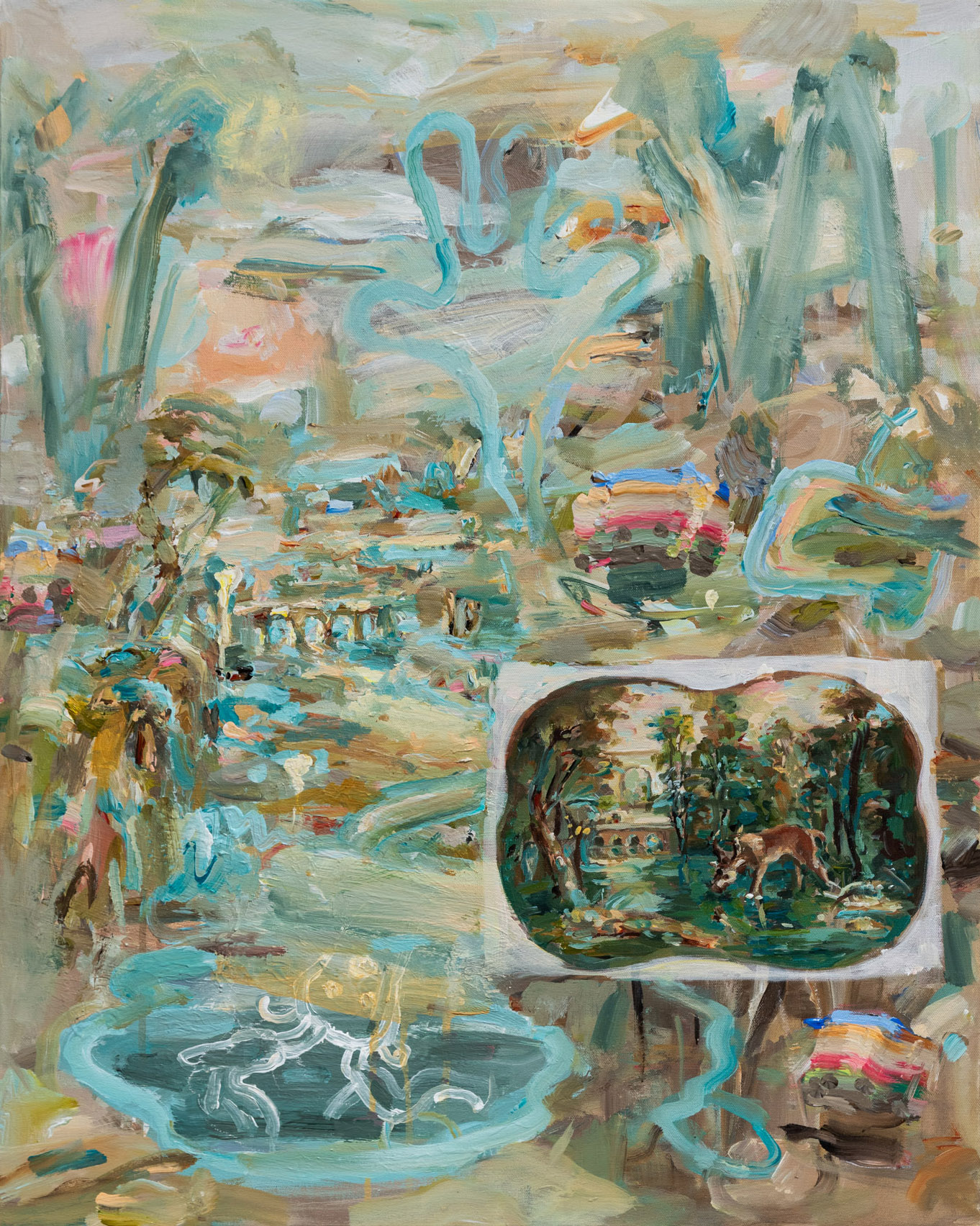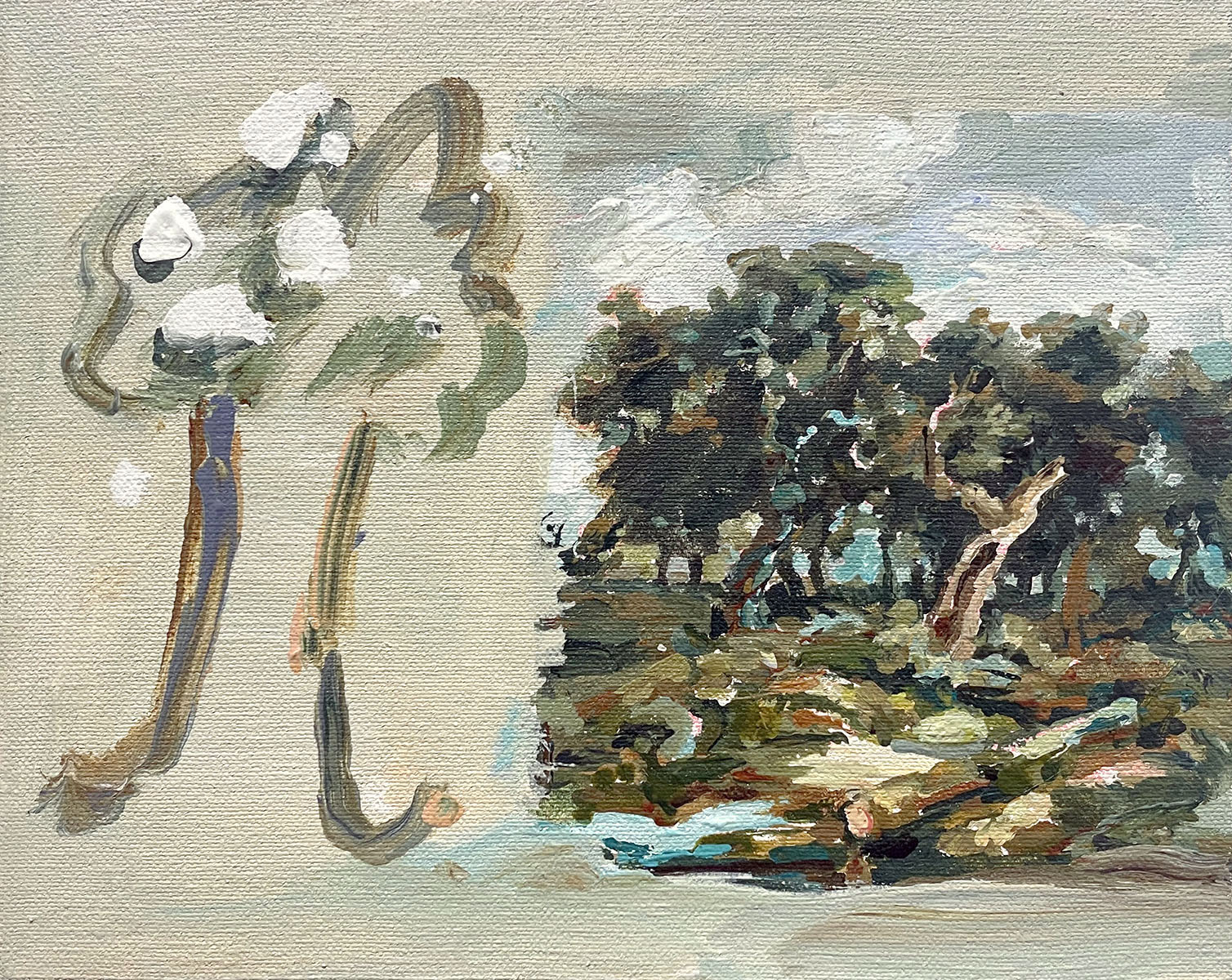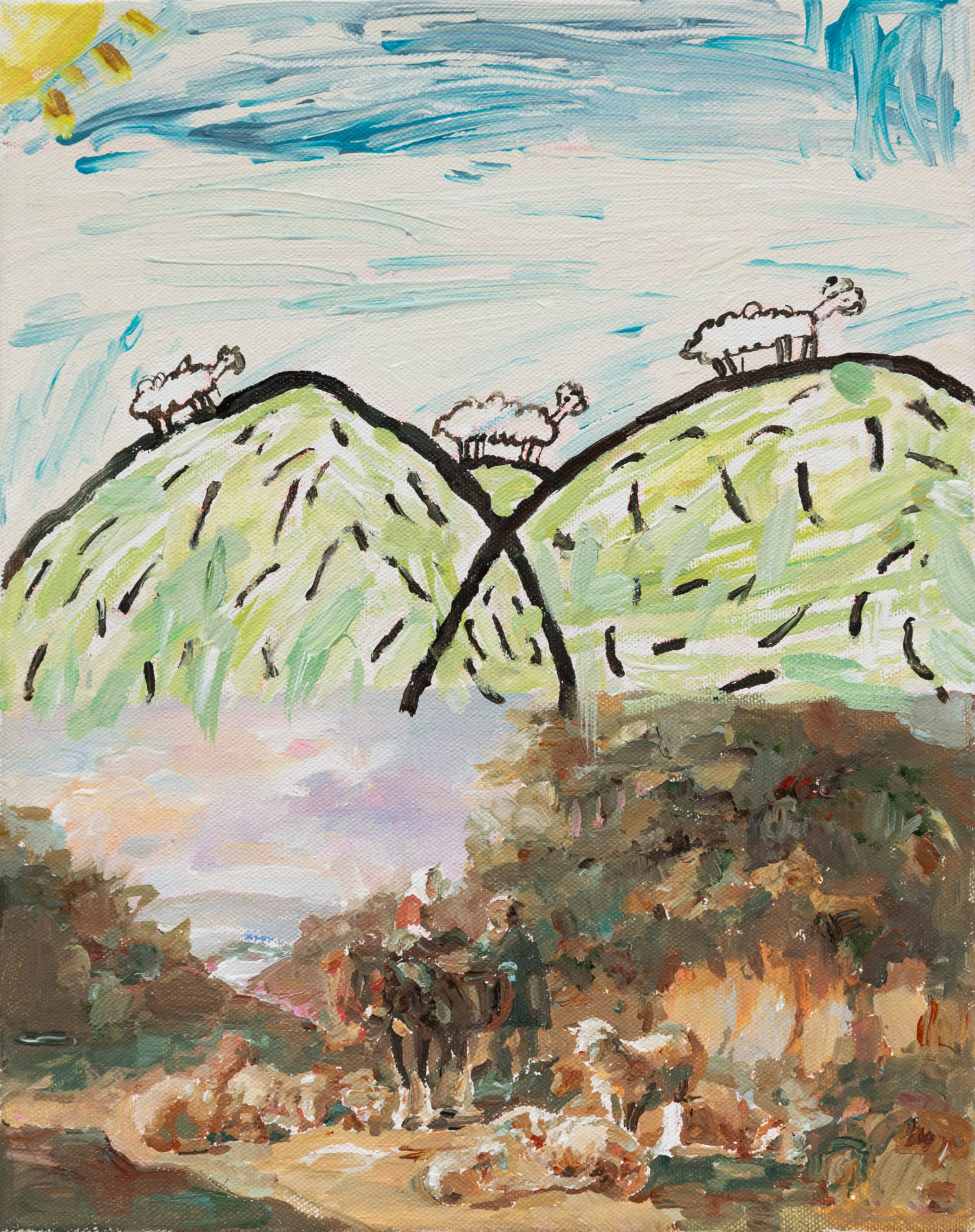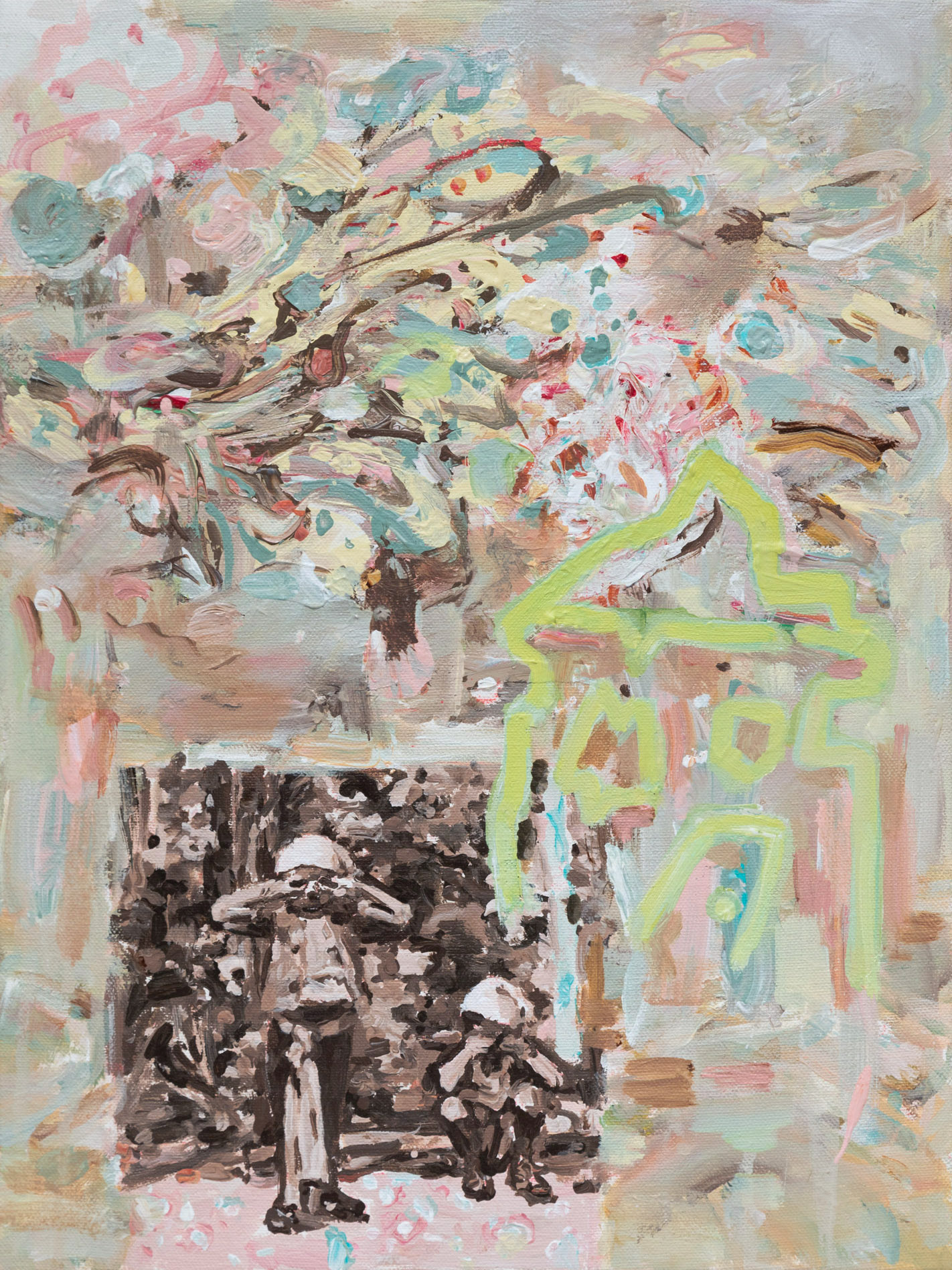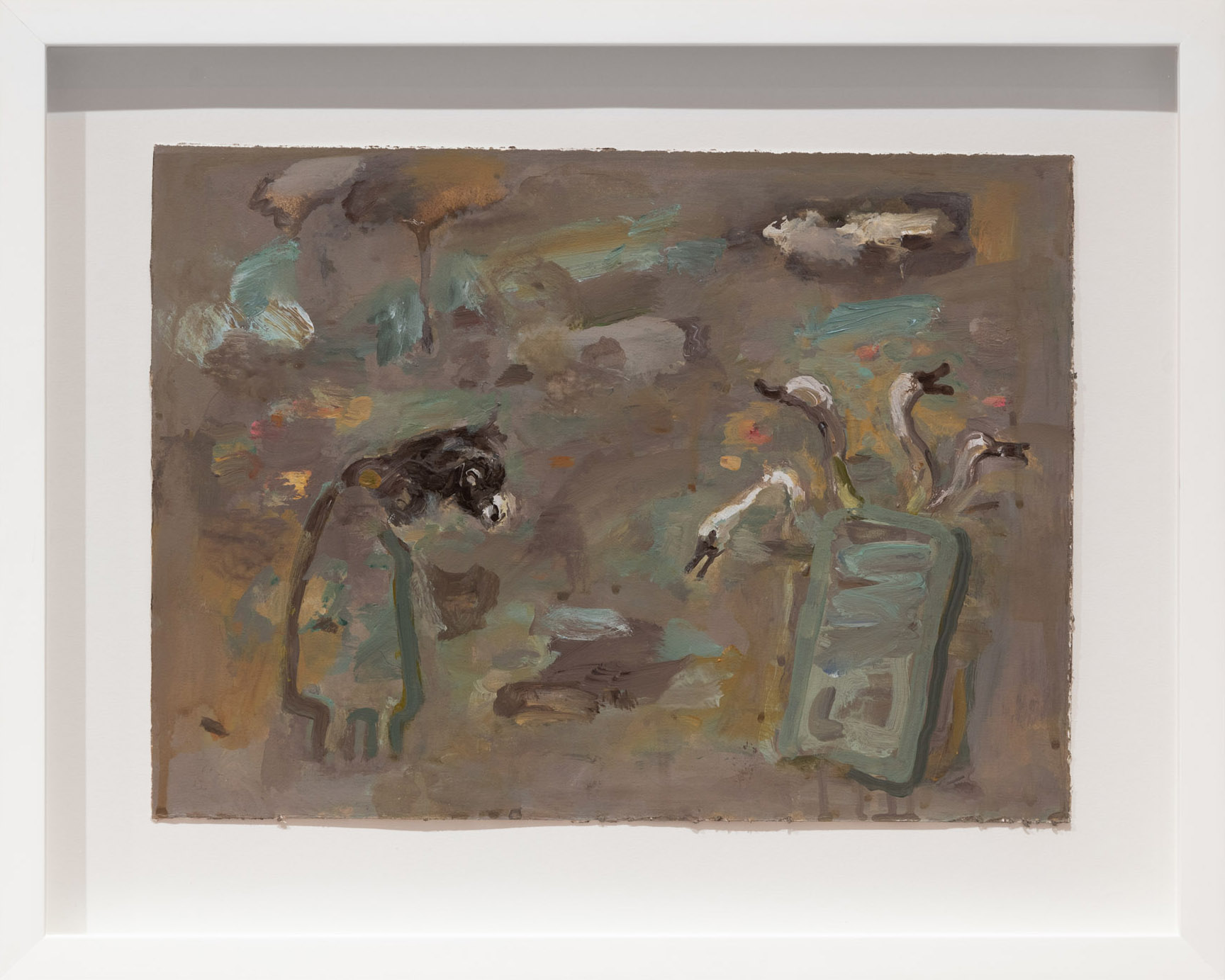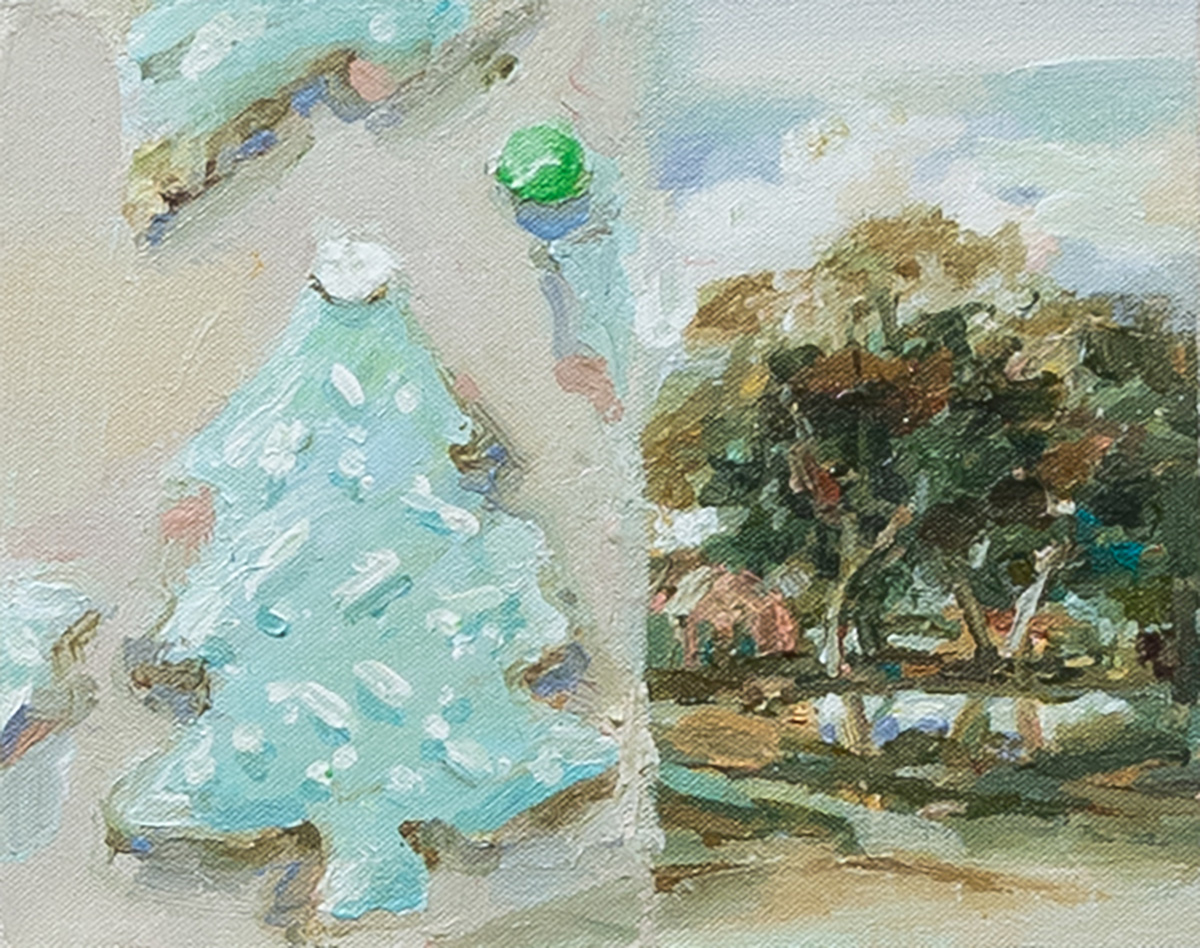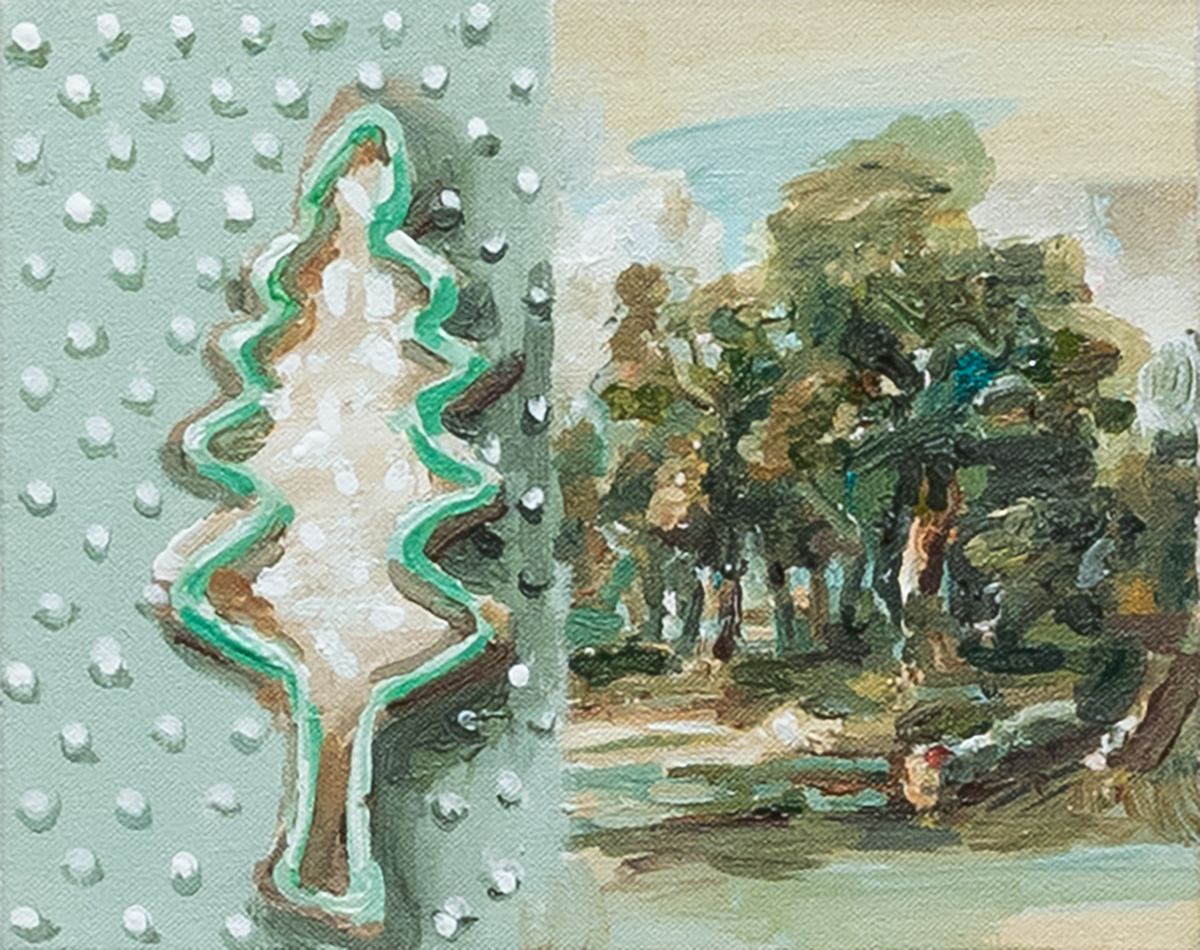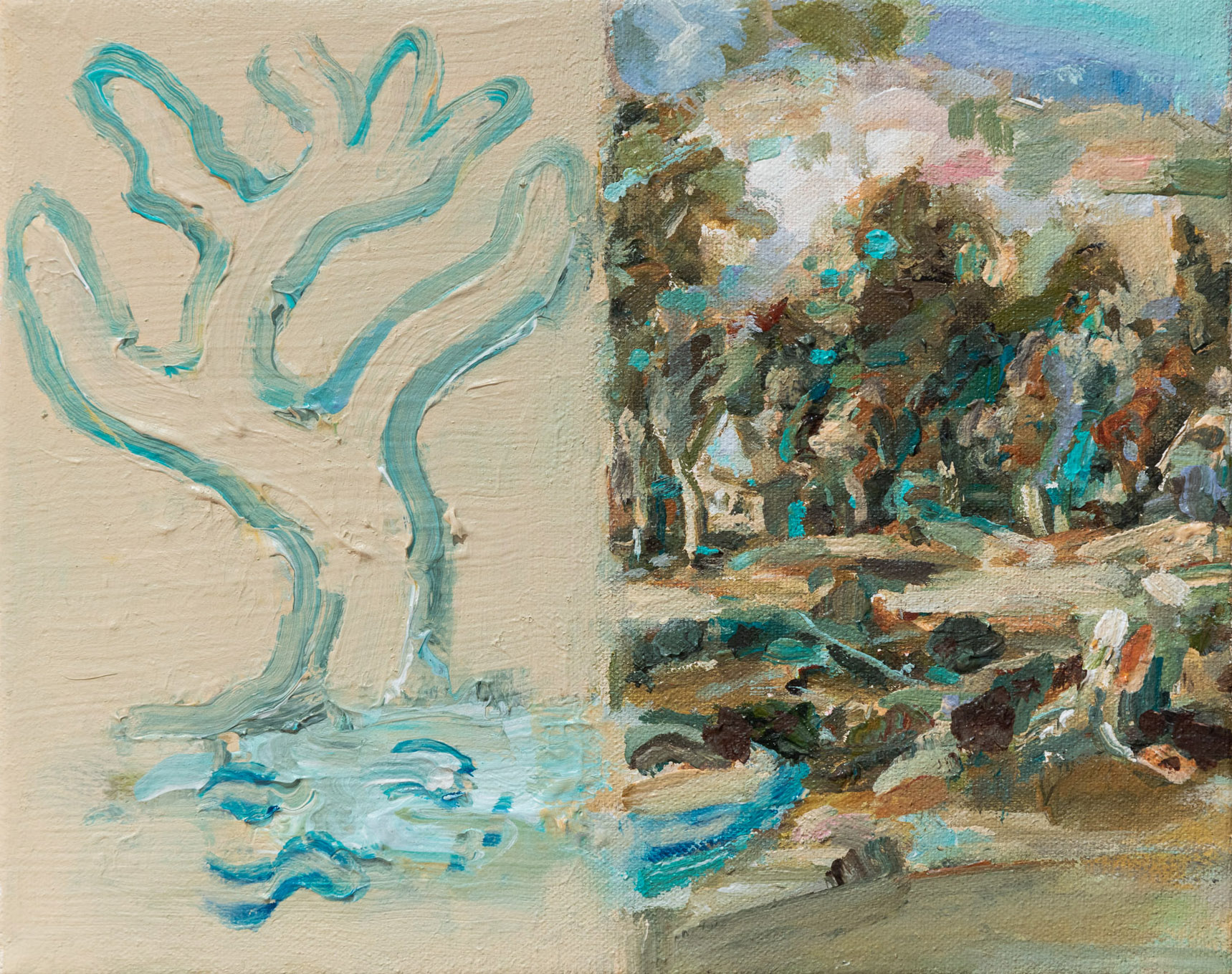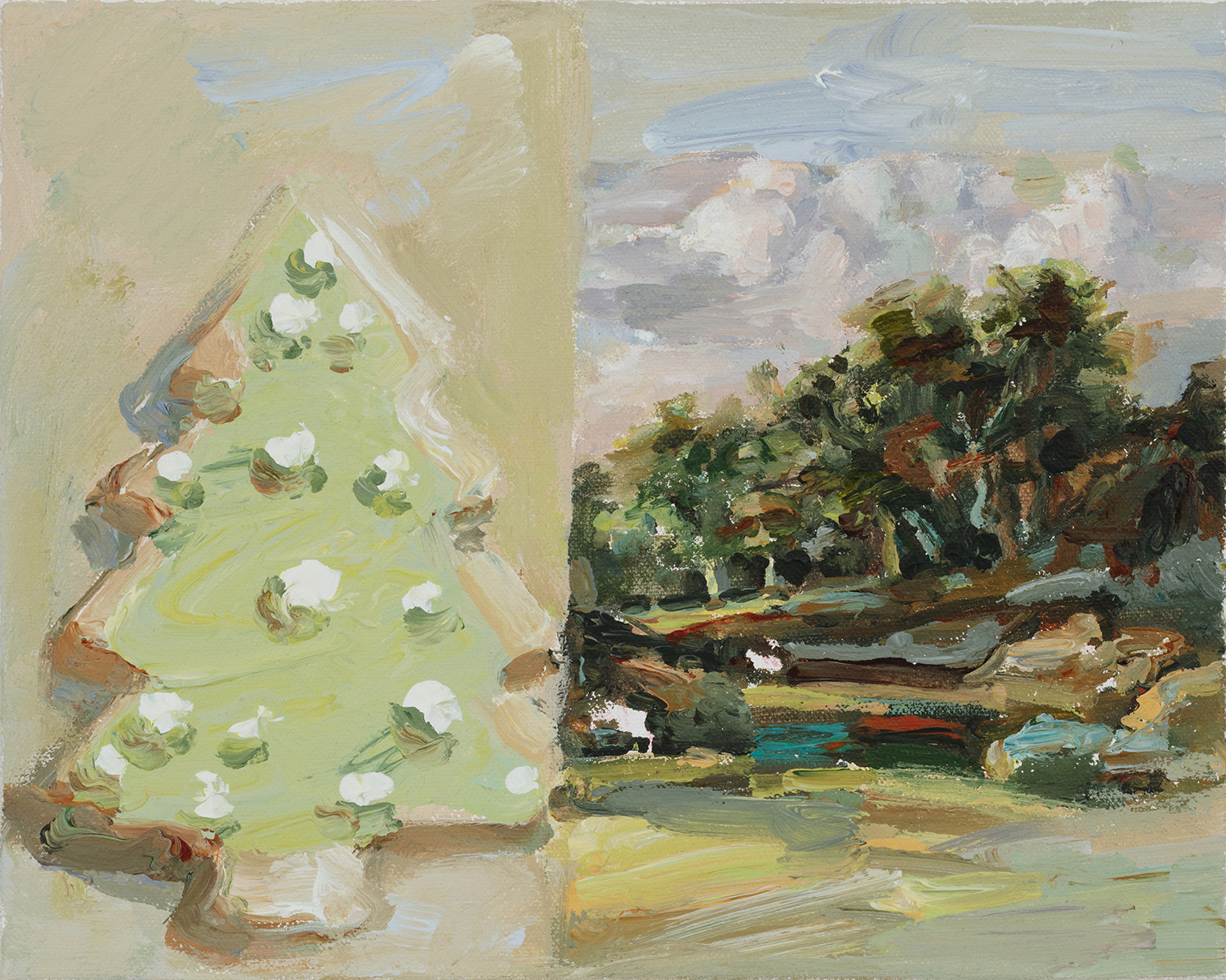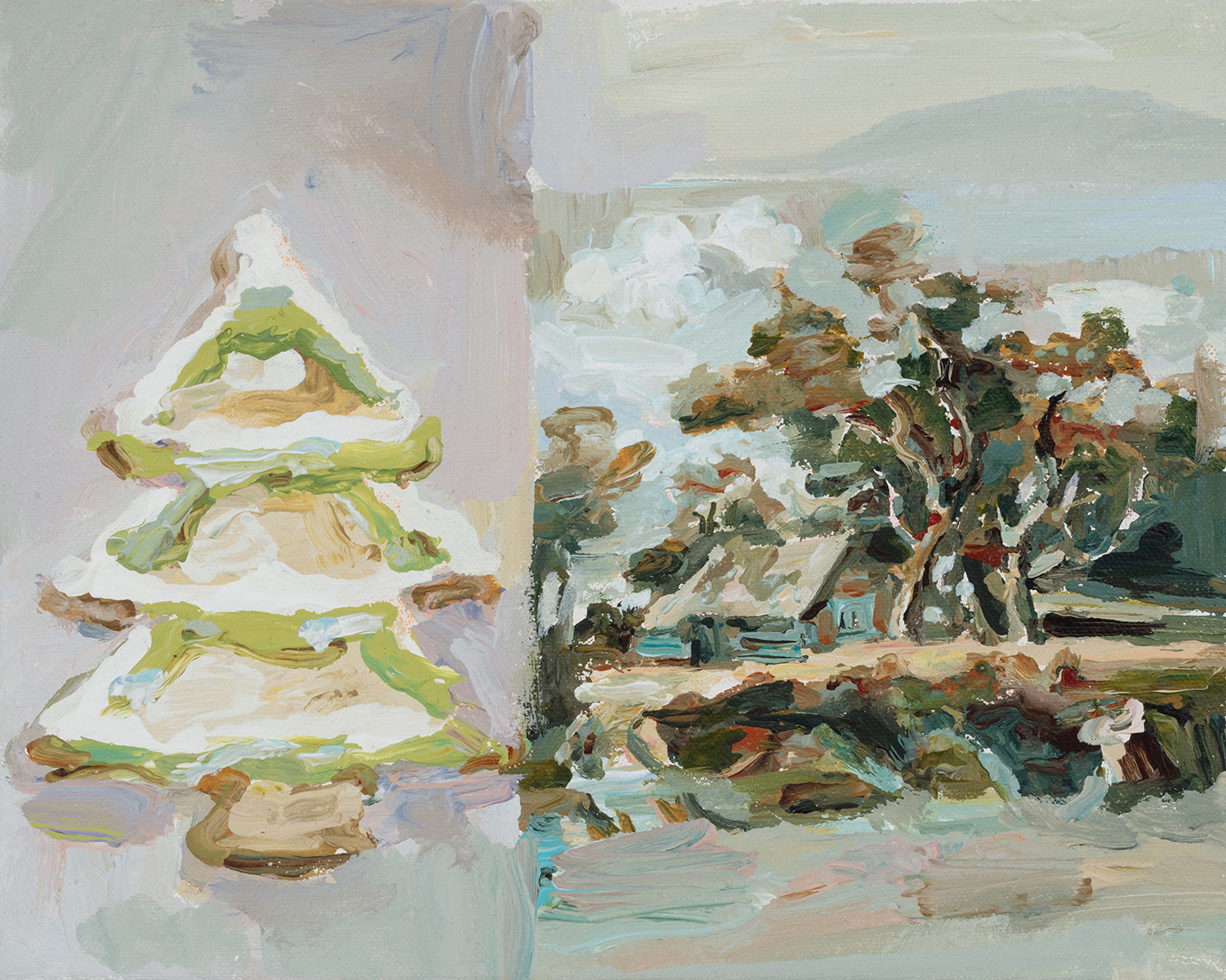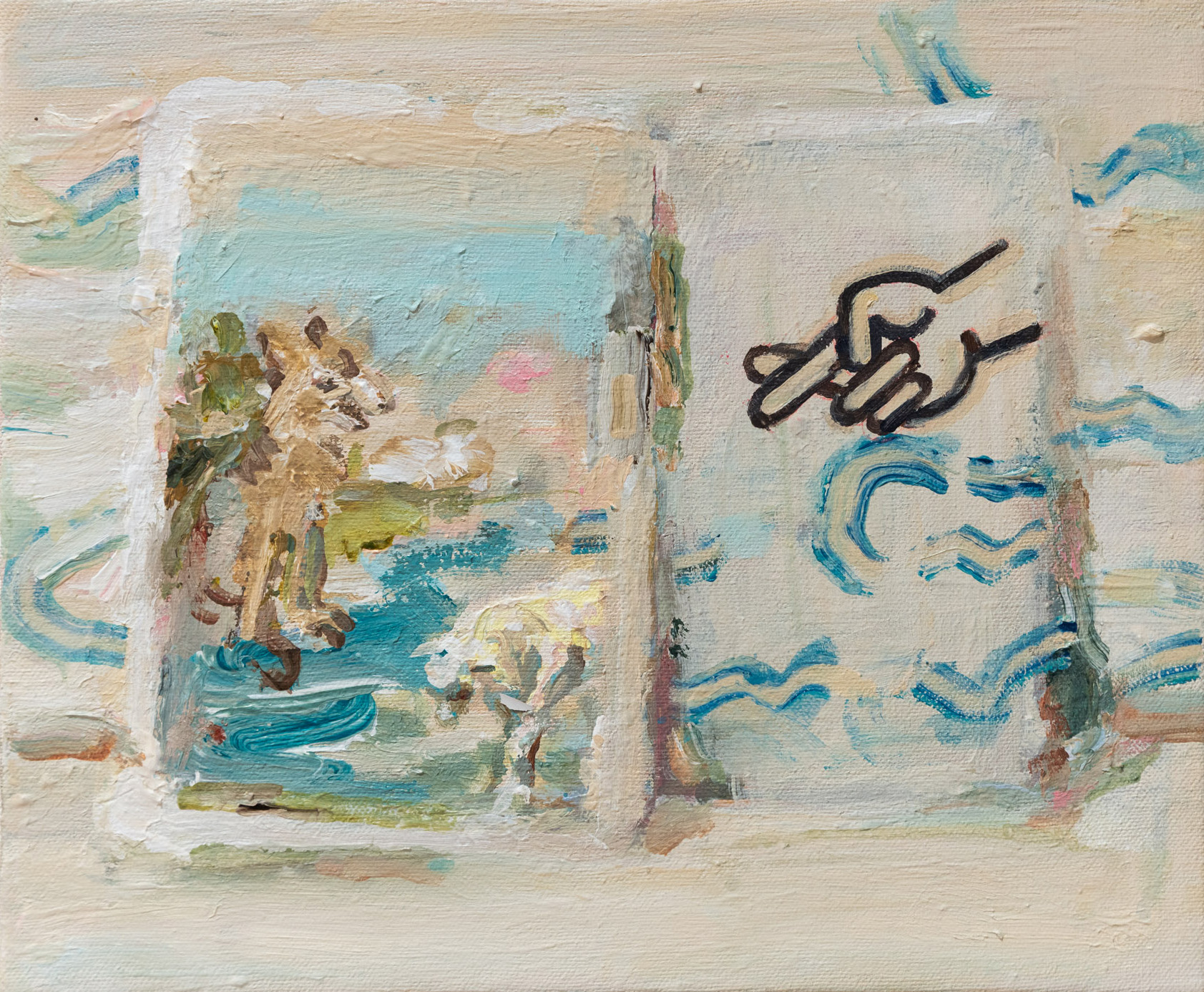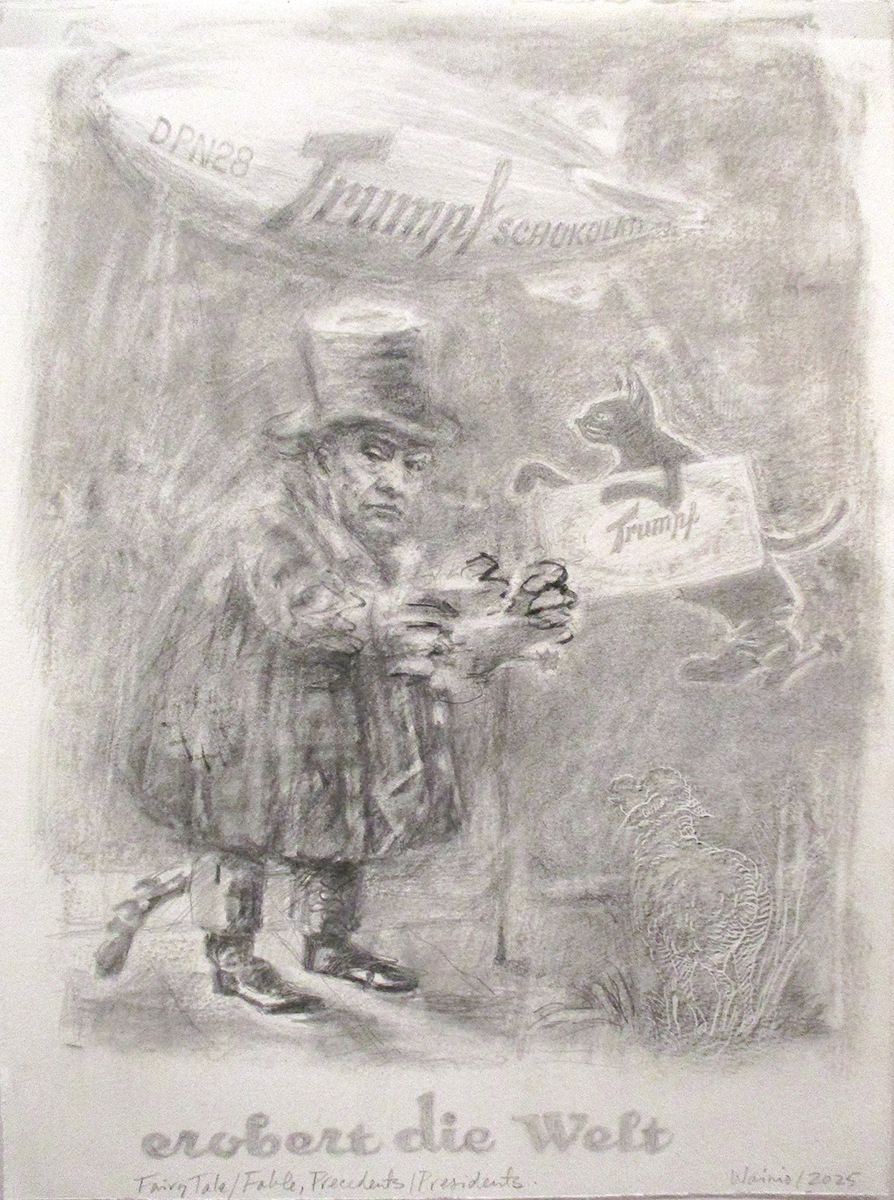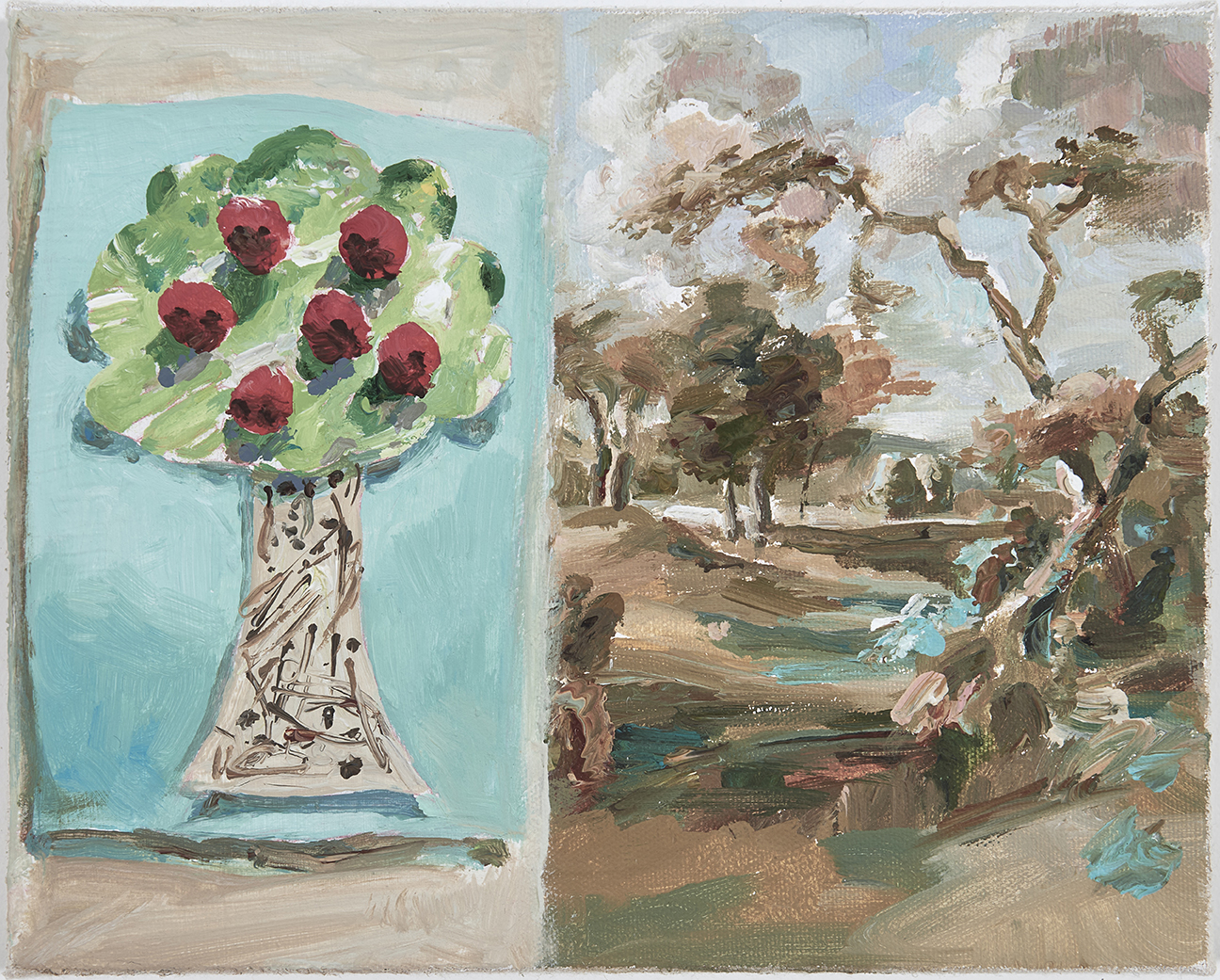Precedents
Carol Wainio
new paintings and works on paper
January 17 - February 22, 2025
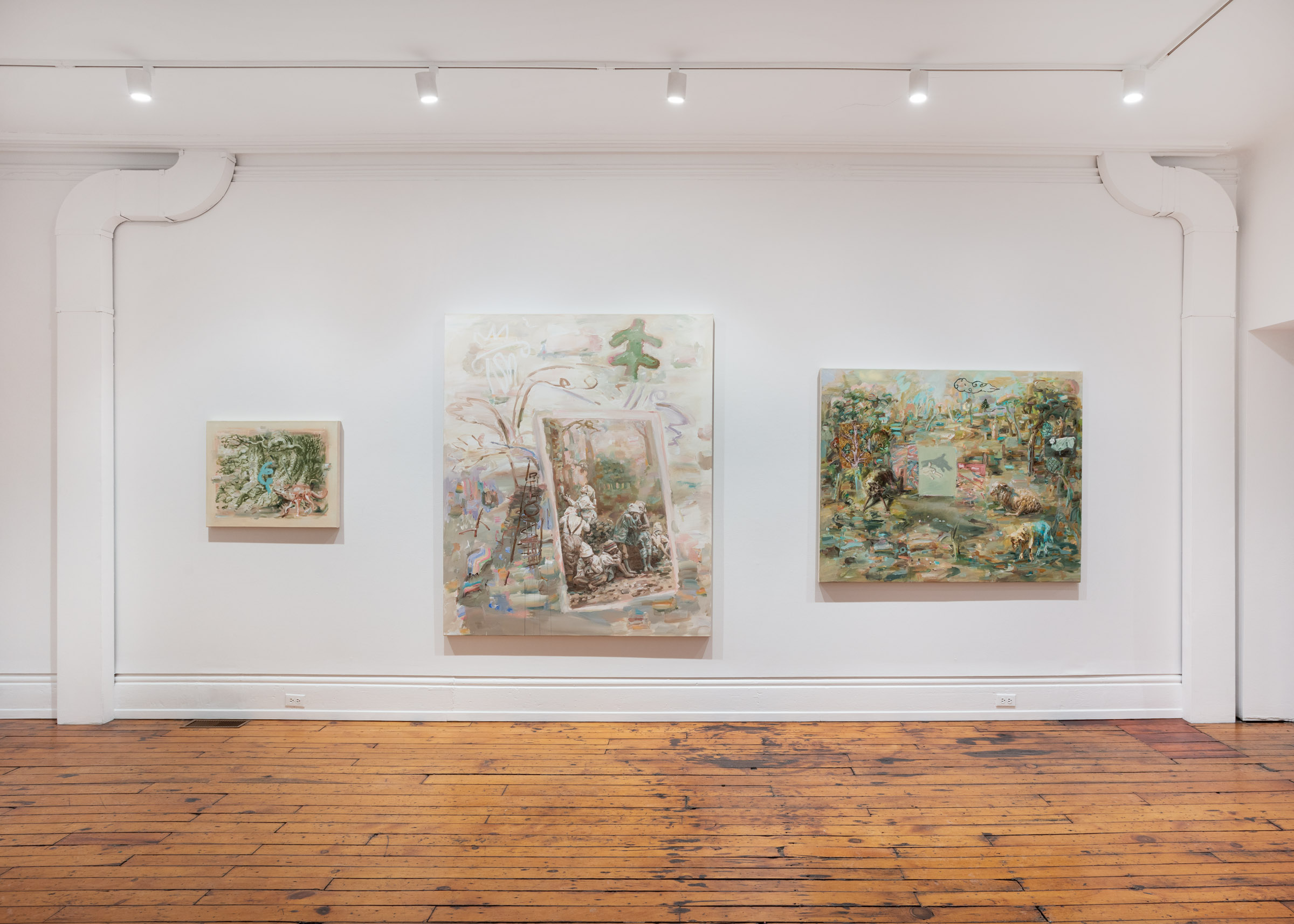
Precedents
In the fable The Wolf and The Lamb, a little lamb is drinking from a stream. As a justification to devour him, a nearby wolf claims that the lamb is muddying his drinking water. The lamb replies calmly that this is impossible because the wolf is upstream. The wolf invents other falsehoods or injuries as reasons to kill the small creature, all shown by the lamb to be equally impossible, but to no avail. The closing lines in one of many versions of this short parable about the futility of facts, science, laws, or truth in the face of power, are:
To those this fable I address
Who are determined to oppress
And trump up any false pretence
But they will injure innocence
Precedents: The works in this exhibition continue a long preoccupation with history and narrative, and with their varied historical and material manifestations - including through fairy tale and fable - stories of things lost, of folly, avarice, power, narcissism, calamity, and of children like Le Petit Poucet or Hansel and Gretel abandoned in the wood by foolish, selfish elders.
Earlier paintings explored the historical ground of early fairy tale illustration through its first reproductions to later uses in late 19th/early 20th century advertising or tableau vivant photo post card and other visual communications. Works in this exhibition also include references to objects like ‘fèves’ (tiny ‘bean’ fable figurines baked into “King’s cakes”) or similar narrative figurines like Hansel and Gretel. In addition to vernacular sources, the work may engage 17th century genre painting or children’s drawings to consider the ways fairy tale and fable were woven into people’s everyday lives and to wonder about how they may speak now.
These historical elements are re-staged in a discursive way in shifting paint grounds, hopefully bringing some residue of their time and place – old narrative figures set against a ground of current climate – both physical, in regard to climate change, and cultural/political - the recent rise of wild conspiracy theories, the rejection of fact and science, and the sense that we are moving backward in time. ‘Fabulism’ was also a term for what were relatively rare instances of false, invented stories in serious journalism, now fully unleashed in social and other media.
Despite fantastic talking animals, climate change was likely unimaginable for Aesop or Jean de la Fontaine. But the ground of these ancient narrative animals has shifted in the Anthropocene and their voices echo strangely and plaintively as nature itself now talks back. In paintings like Let the Animals Speak, dead hares from 17th century genre paintings are rotated and reborn to race with children’s drawings of a tortoise in painted grounds toward an uncertain future.
While some fairy tales have ‘animal helper’ figures, many focus on human social situations (the fear of the stranger/other/women/immigrant at the cottage door, etc.). Like Le Petit Poucet and Puss in Boots, Barbe Bleu (Bluebeard, the story of a nobleman who murders his wives) was included in the original 1695 Perrault collection. It is also the adapted title of George Steiner’s 1971 collection of essays on the fragmentation of Western culture, fascism, the holocaust, and the failures of modernism. Essays like The Great Ennui and A Season in Hell (after a poem by Rimbaud) seem relevant now.
If not in the world of fairy tale, what kind of historical ground gives us as grotesque a figure as Donald Trump, or throws up a little girl with braids (named Greta, like Gretel) to save us, like her French counterpart trope, Le Petit Poucet? Much has been made of the unprecedented actions, language and fairy tale rhetoric of Trump (serious commentators resorting to fairy tale tropes like The Emperor Has No Clothes). But there are precedents in fairy tale and early fairy tale’s endings were not always happy.
Fables differ from fairy tale in being primarily allegories of the human condition expressed dispassionately with little detail, psychological shading, or heroes/villains with which to identify (perhaps why they have endured and been applied to moral and political questions while fairy tale could be well suited to cunning advertising). Though morals were applied at various times, fables often leave sober, open questions: The Dog and the Wolf both may each have a valid point about freedom versus security. The Fox and The Stork both lose something in being unable to share sustenance (a parable of the current media diet). Fables seem less polemical than current cultural and political braying. Instead, serious reflection is encouraged.
We may still teach children about seasons, climate change or the fact that water flows downstream. We may still try to instil values like truth or humility against a noisy, dimming background of falsehood. Although not permitted to practice as artists at the time of these tales, older women and mothers were traditionally the oral spinners of what were then called ‘household tales’. Perhaps as an older female artist long interested in the relationships between histories big and small, I’m drawn to both the background and figures of fairy tale and the cautionary timbre of fable for hope, solace, and beauty in these small histories…to understand or wonder through an old craft like painting, to witness and work through slow material processes and perceptions about the past and the world we now find ourselves in.
Carol Wainio
January, 2025
Carol Wainio was born in Sarnia, Ontario in 1955. After studies at the Nova Scotia College of Art and Design and the University of Toronto, she earned an M.F.A. from Concordia University in 1985. She taught in the Visual Arts Department at the University of Ottawa from 1987 to 1989 and was an assistant professor in the Department of Visual Arts at Concordia from 1989 to 1998. Wainio lives and works in Ottawa, where she is an adjunct professor at the University of Ottawa. Carol Wainio is a recipient of the Governor General's Award in Visual and Media Arts (2014).
Wainio's exhibition The Book, curated by Diana Nemiroff for Carleton University Art Gallery, included works from 2002 - 2010, and toured throughout Canada. A comprehensive hardcover catalogue is available. Wainio’s paintings were featured in the solo exhibition Old Masters, curated by Crystal Mowry for the Kitchener Waterloo Art Gallery, March - April, 2013. Her work was exhibited at the Montreal Museum of Fine Arts as part of the group exhibition Her Story Today, October 2015 - August 2016. In 2018 she was included in the inaugural group exhibition We'll All Become Stories at the new Ottawa Art Gallery. In 2019 she was named the Artist-In-Residence at the Diefenbunker, in Ottawa, which led to the exhibition Disasters for Little Children. Wainio's work was included in the group exhibition Painting Nature with a Mirror, at the Musée d'art contemporain de Montréal, December 2019 – June 2020. Wainio’s paintings were the subject of the solo exhibition Réenchantement at 1700 La Poste in Montreal, November 2023 - January 2024. Wainio's work will be featured in a solo exhibition at Baie-Saint-Paul, QC in summer 2025.
